Apollo 17: NASA's final Apollo moon landing mission in pictures
Apollo 17 launched on Dec. 7, 1972, and was the last Apollo mission to go to the moon. The iconic mission took the 11th and 12th people to the lunar surface.
It was the first Apollo mission to include a scientist when geologist Harrison "Jack" Schmitt was selected to join the final crew alongside the Command module pilot Ron Evans and Mission Commander Eugene Cernan.
Schmitt and Cernan landed in a lunar valley called Taurus-Littrow. The region was chosen, in part, due to its interesting and variable geology, including the Shorty Crater — believed to hold evidence of past volcanic events.
Here we take a look at some of the best images from the mission that marked the end of the Apollo era.
Related: How many people have walked on the moon?
Apollo 17 prime crew
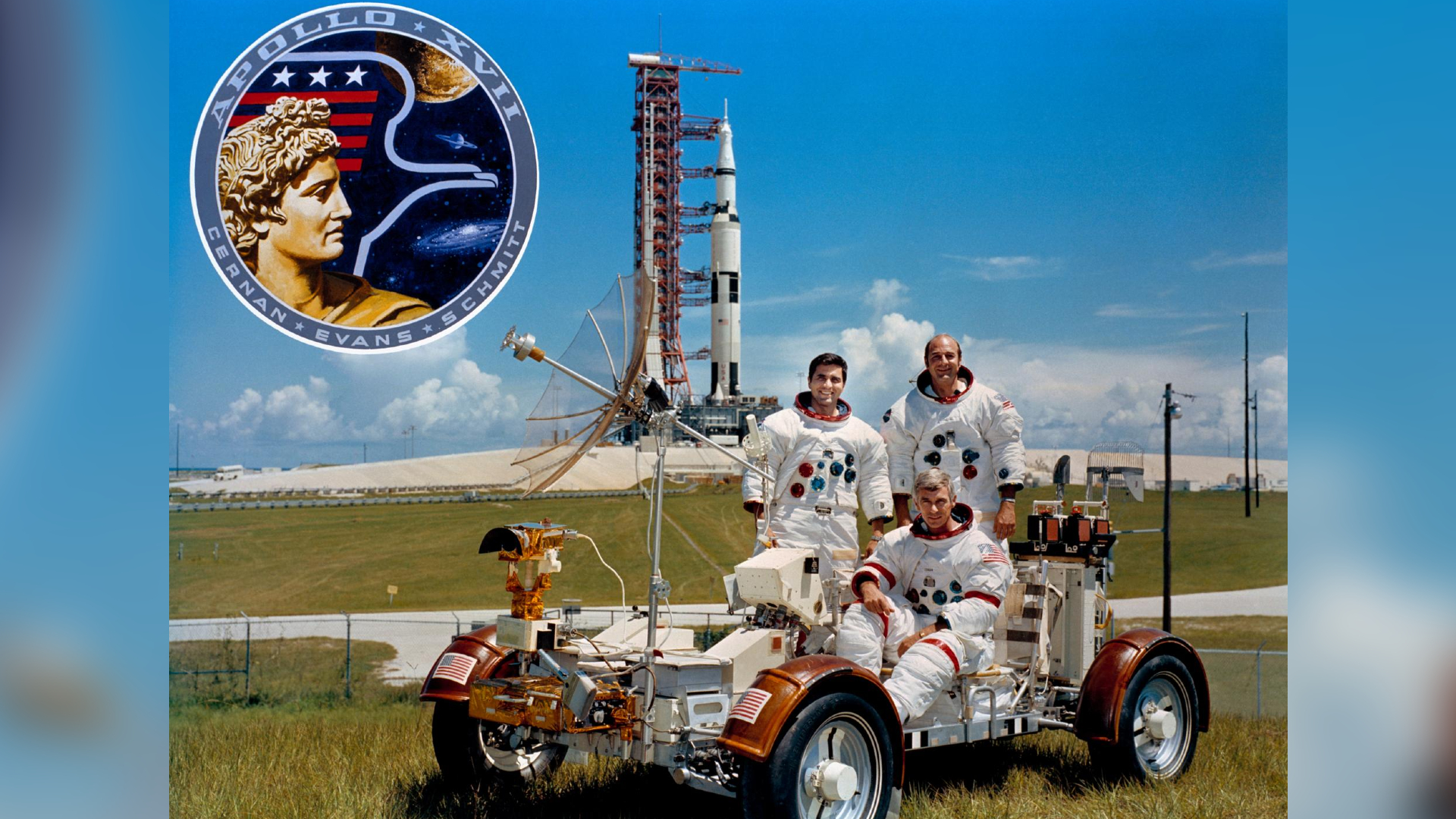
On Dec. 7, 1972, NASA launched its last Apollo mission to the moon: Apollo 17. See photos from that historic mission, which landed astronauts Gene Cernan and Harrison Schmitt on the moon while Ron Evans orbited above. Shown Here: This official NASA image shows the prime crewmen for the Apollo 17 lunar landing mission in the Lunar Roving Vehicle trainer. In the background is the Apollo 17 Saturn V space vehicle standing on the Launch Complex 39 Pad A at Kennedy Space Center in Florida.
Apollo 17 Saturn V
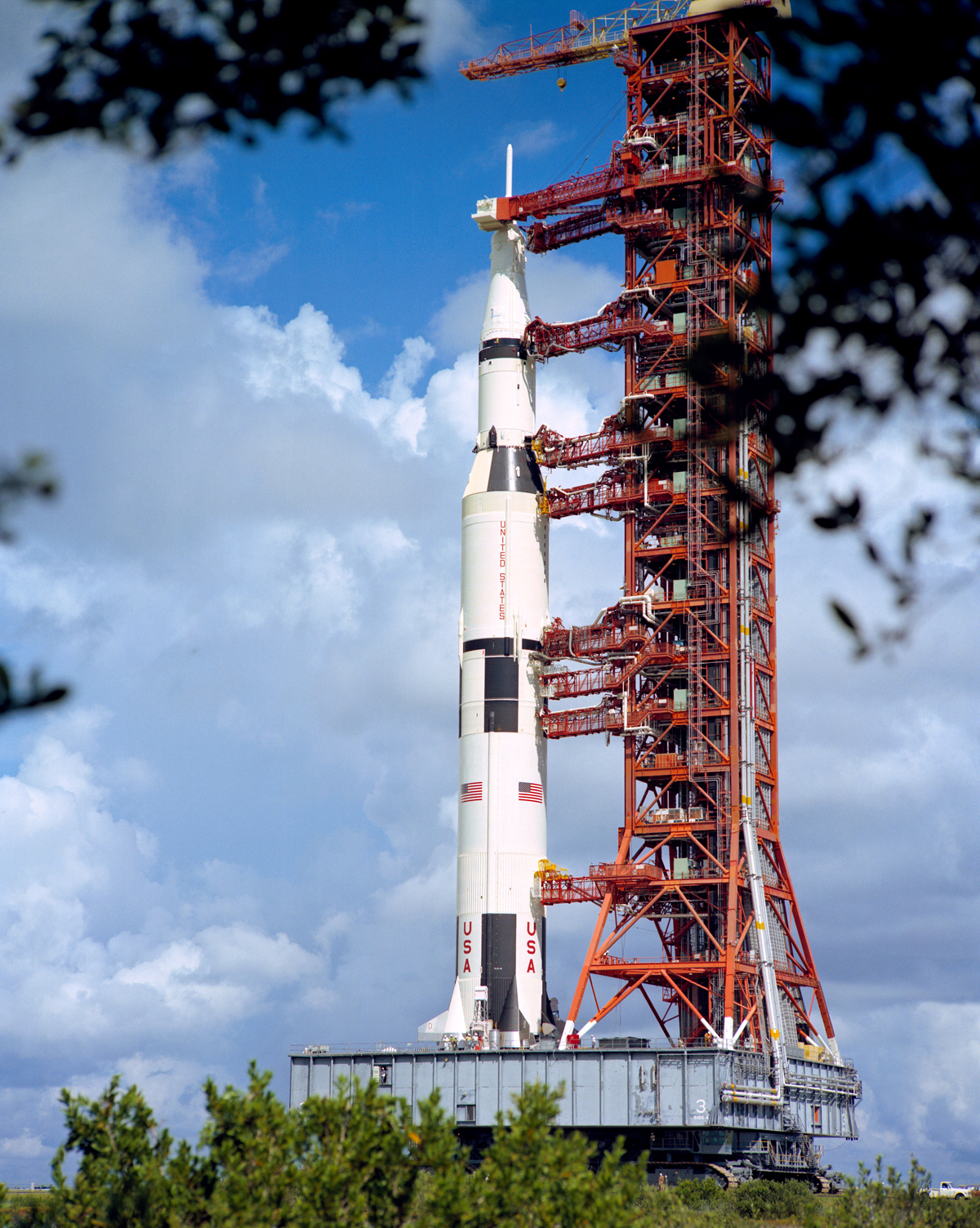
Near Pad A at Launch Complex 39, the Apollo 17 Saturn V space vehicle stands tall, riding atop a gigantic crawler transporter.
Get the Space.com Newsletter
Breaking space news, the latest updates on rocket launches, skywatching events and more!
Training for the moon
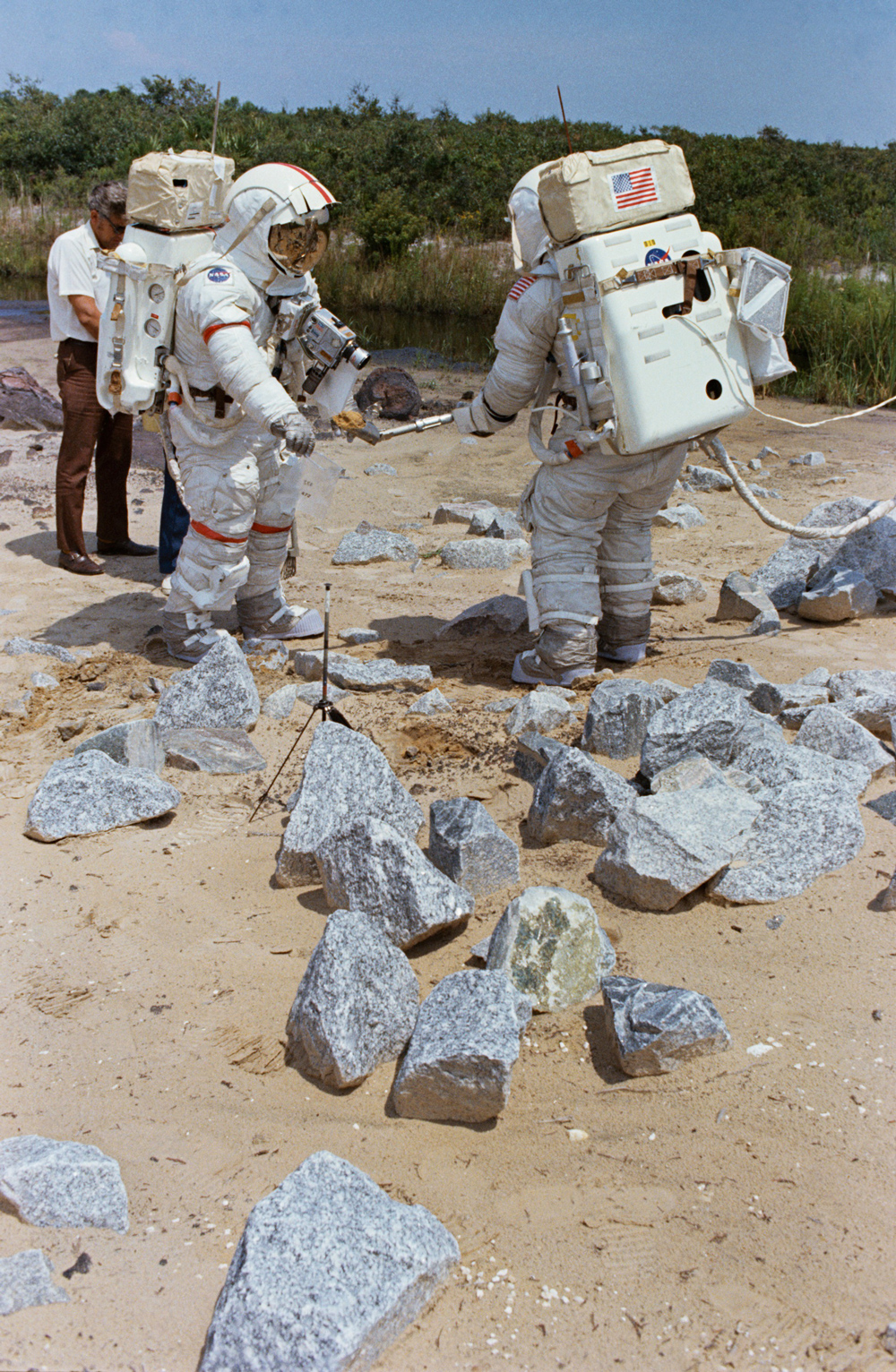
At the Kennedy Space Center, astronaut Eugene A. Cernan (on the left) and Harrison H. Schmitt — the prime crew for the Apollo 17 lunar landing mission — participate in an extravehicular activity training simulating lunar sample collection.
Training for space
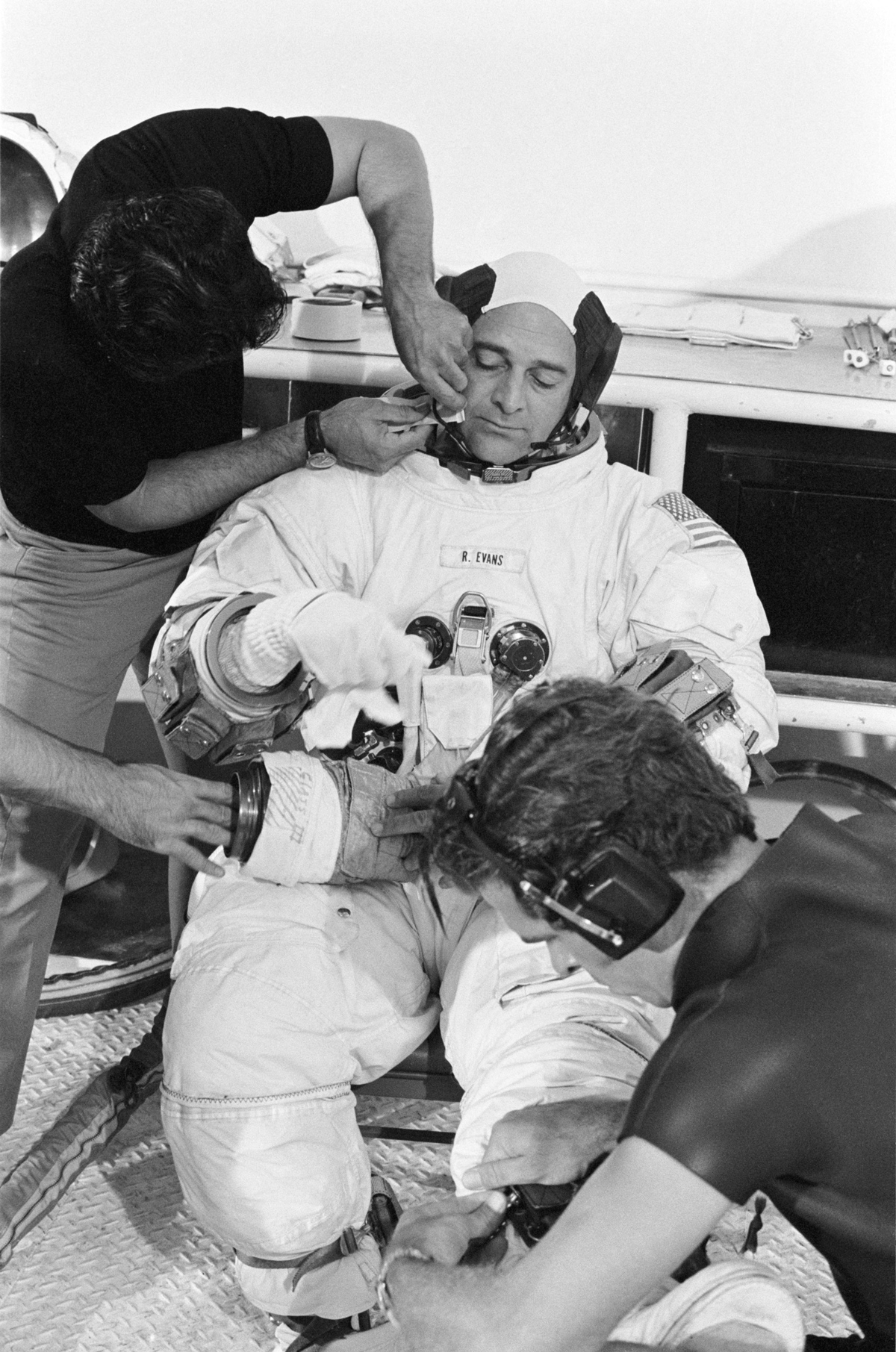
Apollo 17 mission command module pilot astronaut Ronald E. Evans prepares for extravehicular activity training in a Building 5 water tank.
Lunar driver's school
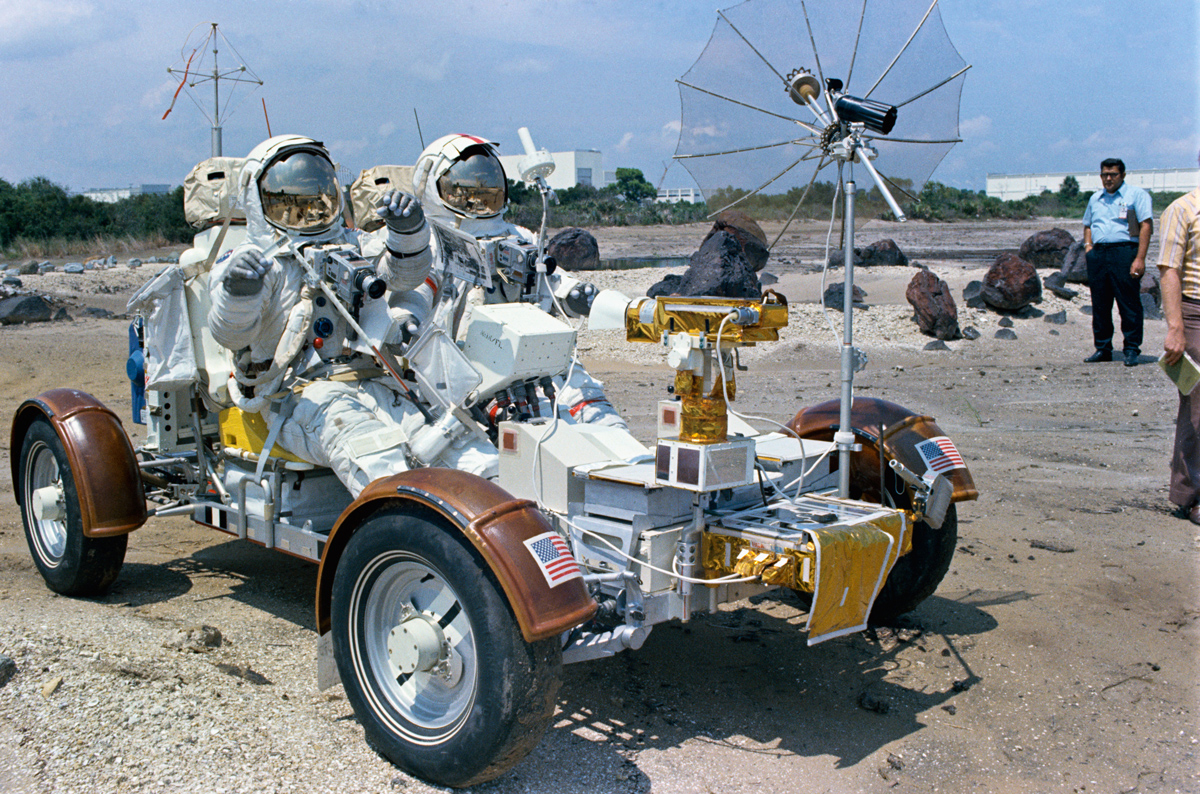
Two of the Apollo 17 lunar landing mission prime crew ride in a LRV trainer at Kennedy Space Center in Florida.
Inspecting the rocks
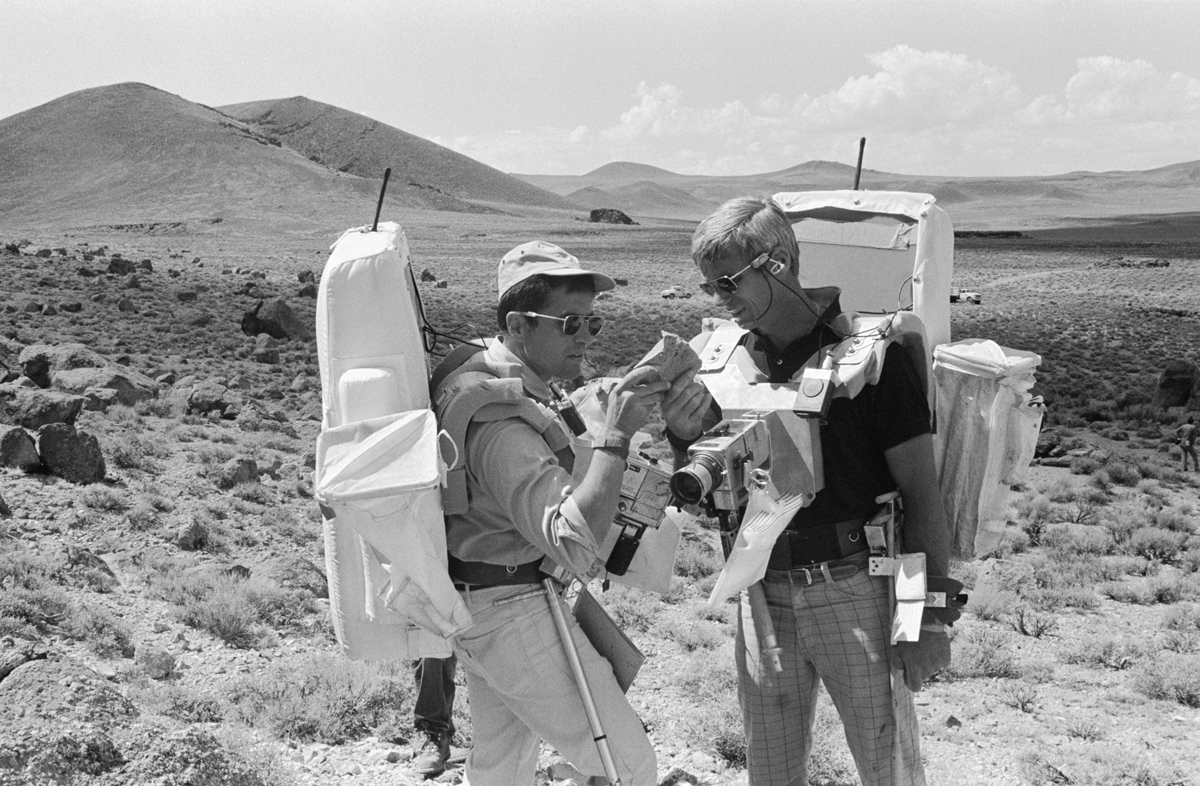
On Sept. 6, 1972, two Apollo 17 lunar landing prime crew members — astronauts Eugene A. Cernan (right) and Harrison H. Schmitt — examine rock specimens during an EVA simulation.
Learning the ropes
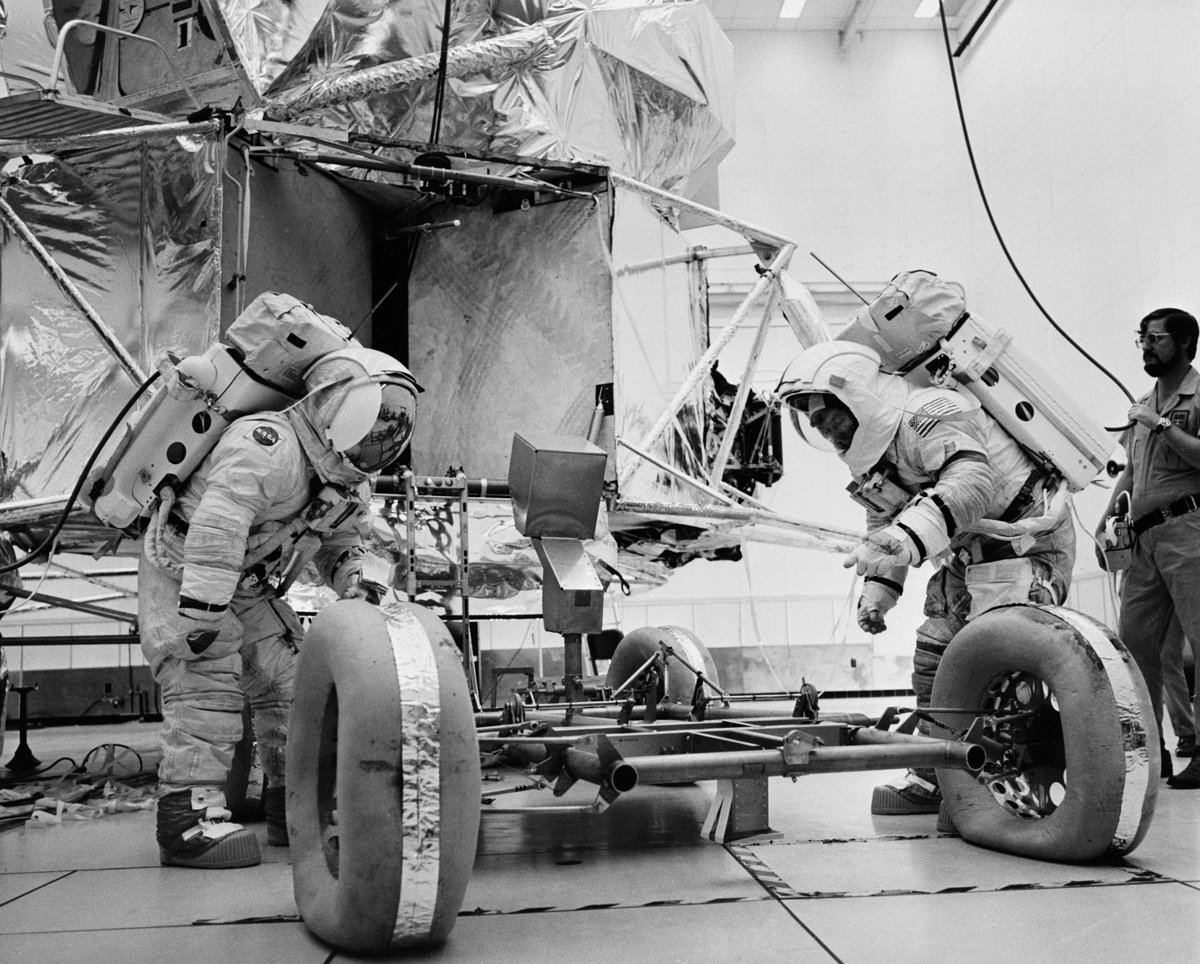
At the Flight Crew Training Building at Kennedy Space Center, astronauts Eugene A. Cernan and Harrison H. Schmitt prepare a LRV trainer as it is removed from a Lunar Module trainer.
H2O as trainer
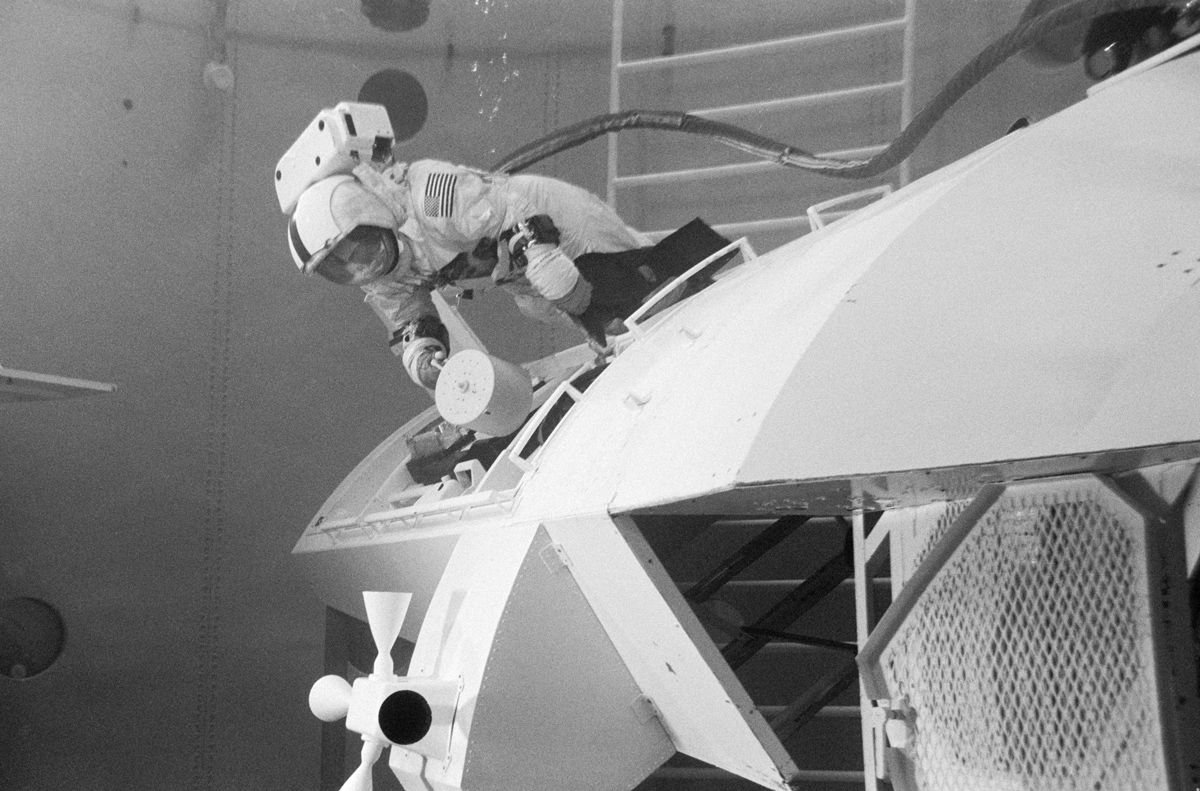
On Sept. 29, 1972, astronaut Ronald E. Evans of the Apollo 17 lunar landing mission, practices for a trans-Earth EVA as the craft leaves lunar orbit heading for Earth.
Electrical experiments
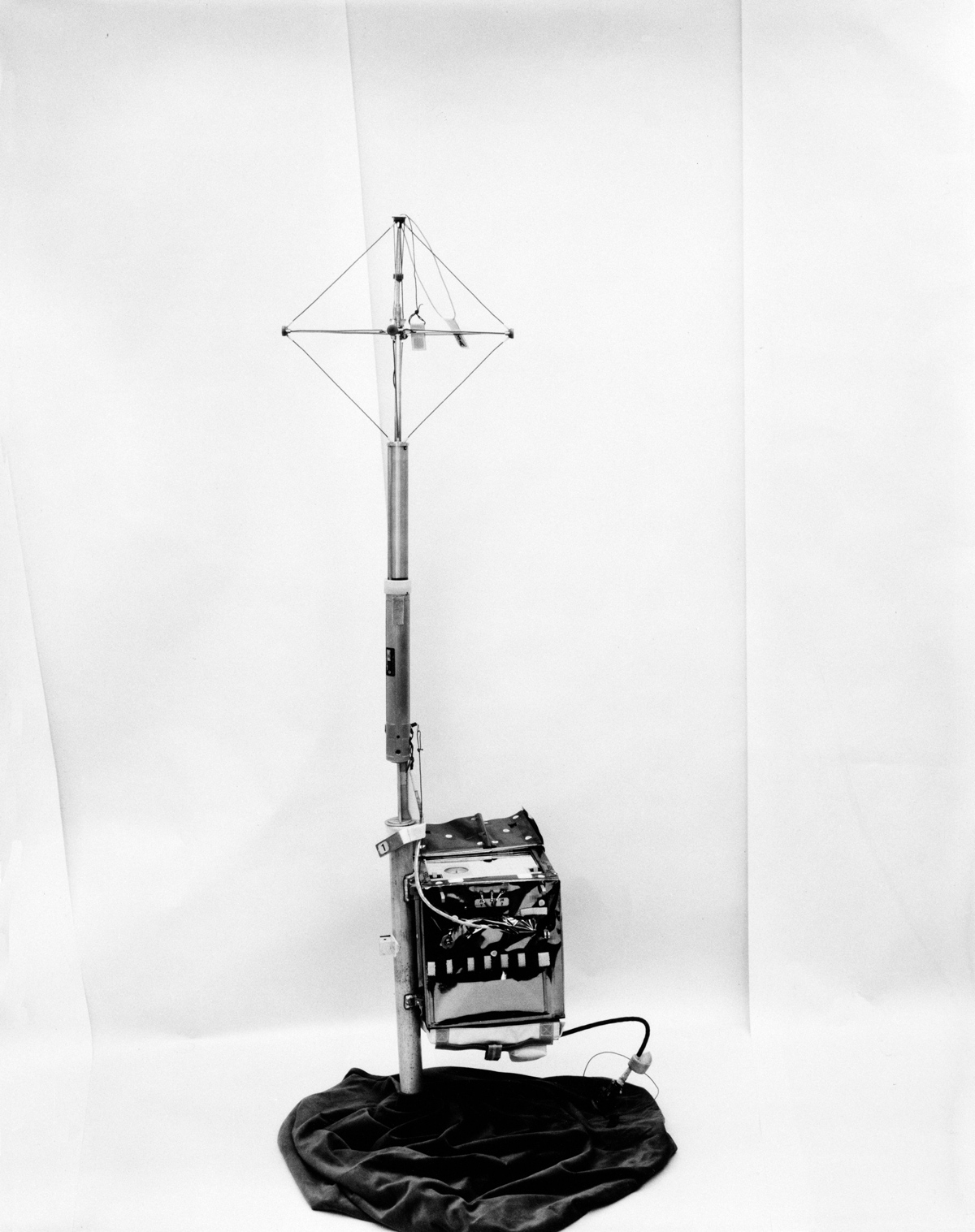
One experiment included on the Apollo 17 mission is the Surface Electrical Properties Experiment. Here the Receiver-Recorder portion is in deployment configuration. This experiment is designed to collect data about the electromagnetic energy transmission, absorption and reflection qualities of the lunar surface.
About the surface
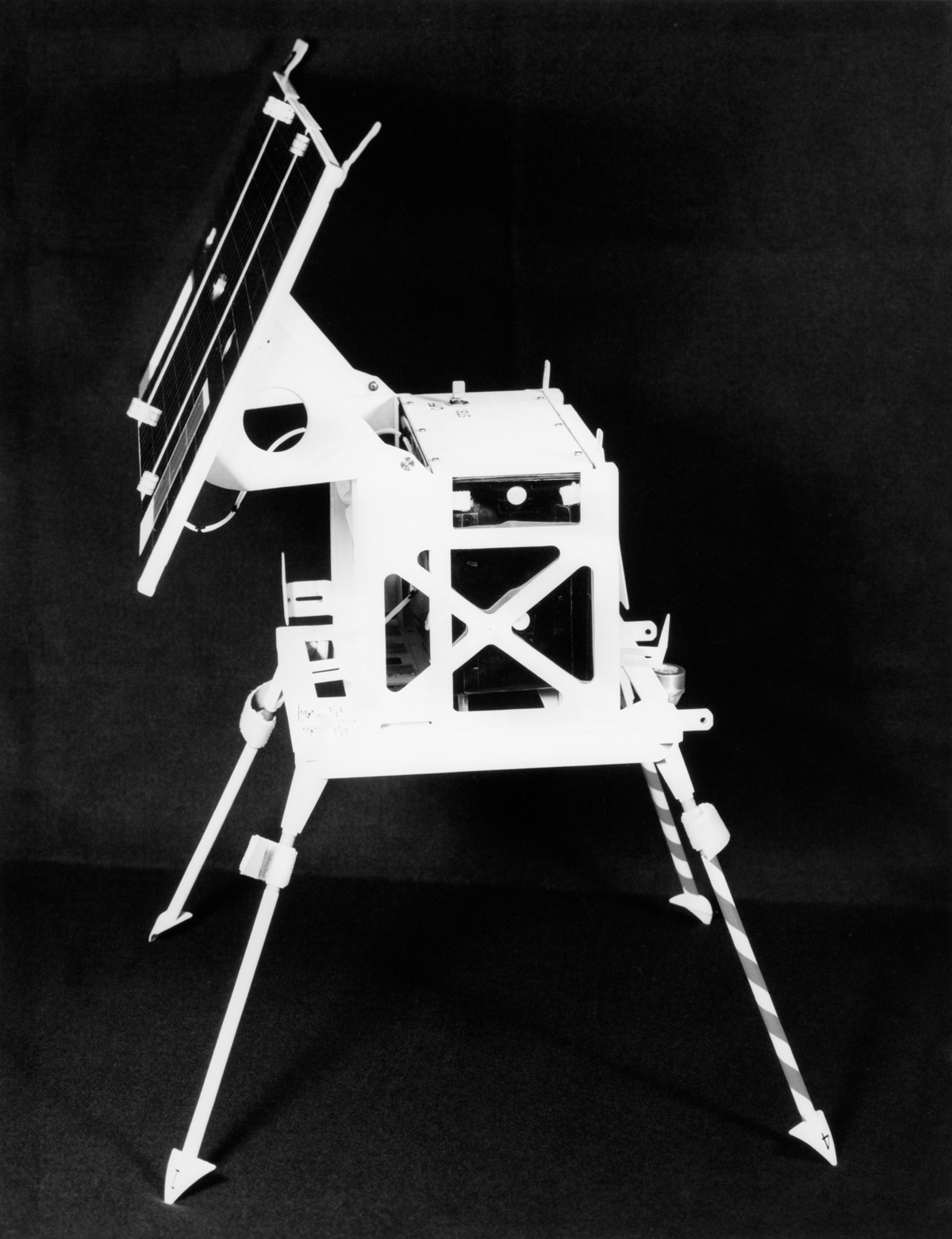
Once the Apollo 17 crew reach the surface at the Taurus-Littrow landing site, the Surface Electrical Properties Experiment will be deployed. Here the transmitter for this experiment is deployed. The experiment will determine lunar surface layering, water presence and electrical properties of lunar materials.
Gravity tests
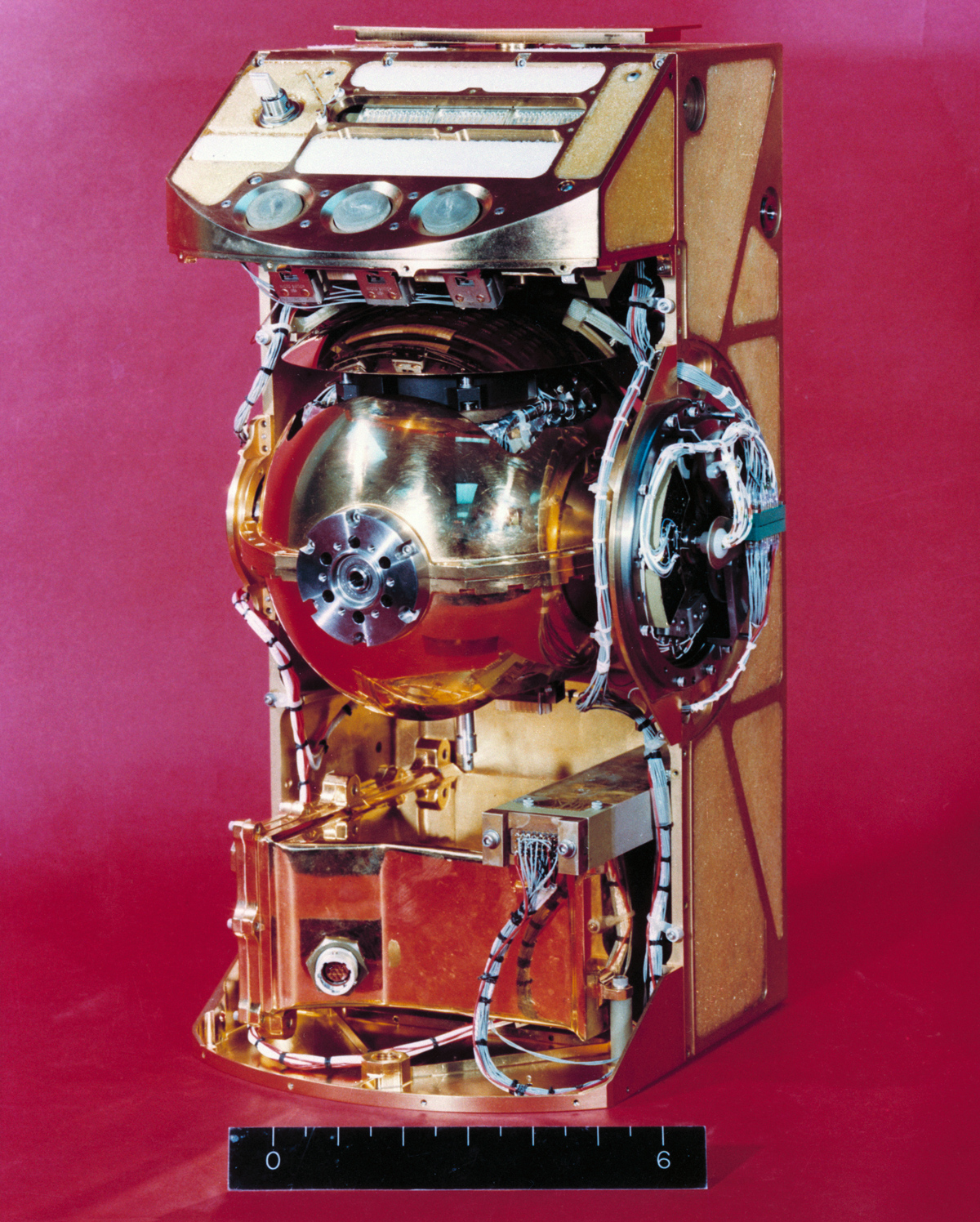
At the Taurus-Littrow landing site, the Apollo 17 crew will utilize the Traverse Gravimeter Experiment, seen above with the cover removed, to create a high-accuracy relative survey of the lunar gravitational field and relate it to the Earth's gravity.
An audio experiment
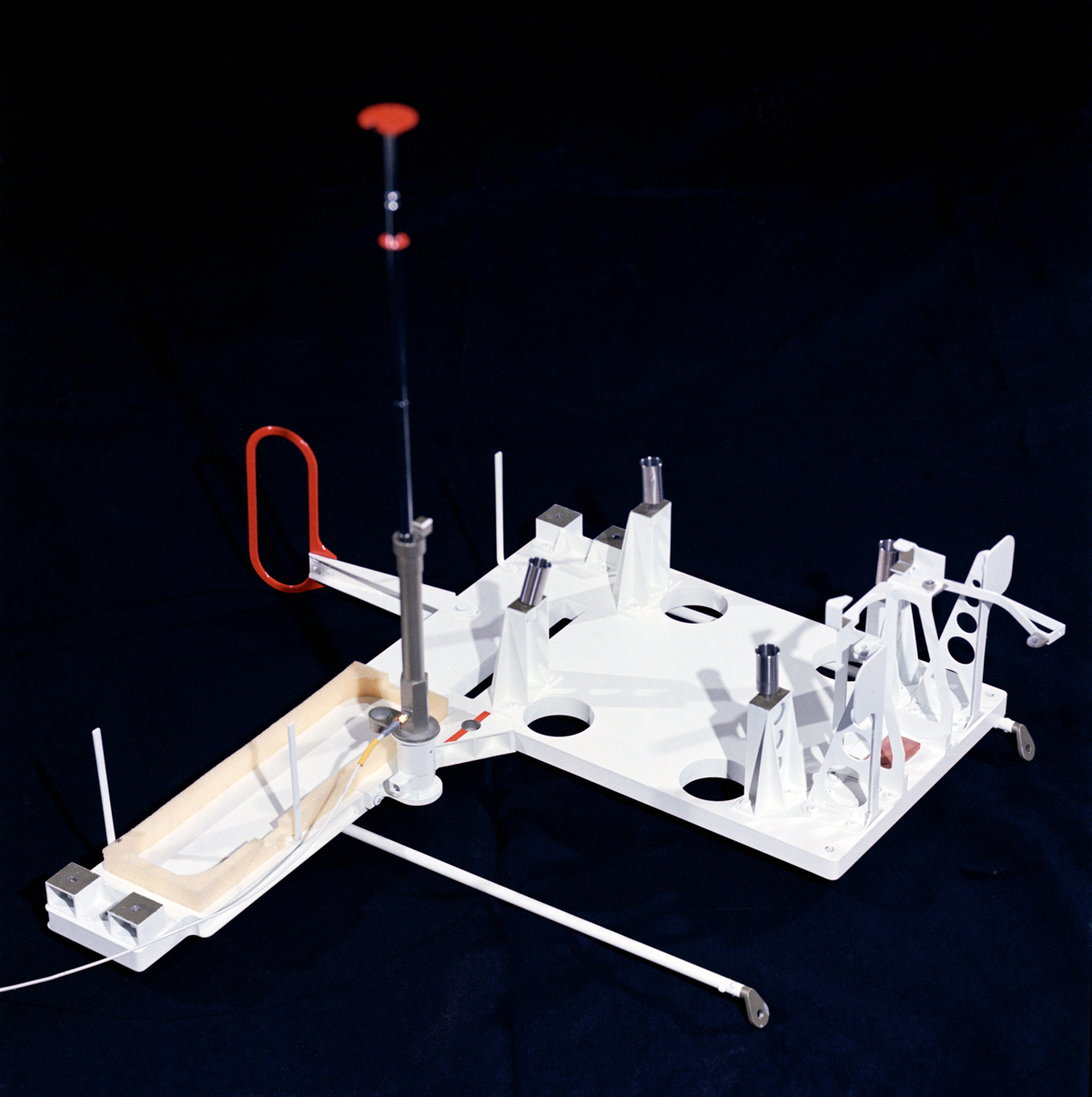
Another objective for the Apollo 17 lunar landing mission includes the Lunar Seismic Profiling Experiment, or LSPE. Here the remote antenna for the experiment is deployed. The experiment will measure sounds from the moon using four geophones. The test begins with eight explosive charges on the lunar surface and includes capturing seismic activity such as moonquakes, meteorite impacts and the Lunar Module ascent stage impact.
LSPE Geophone
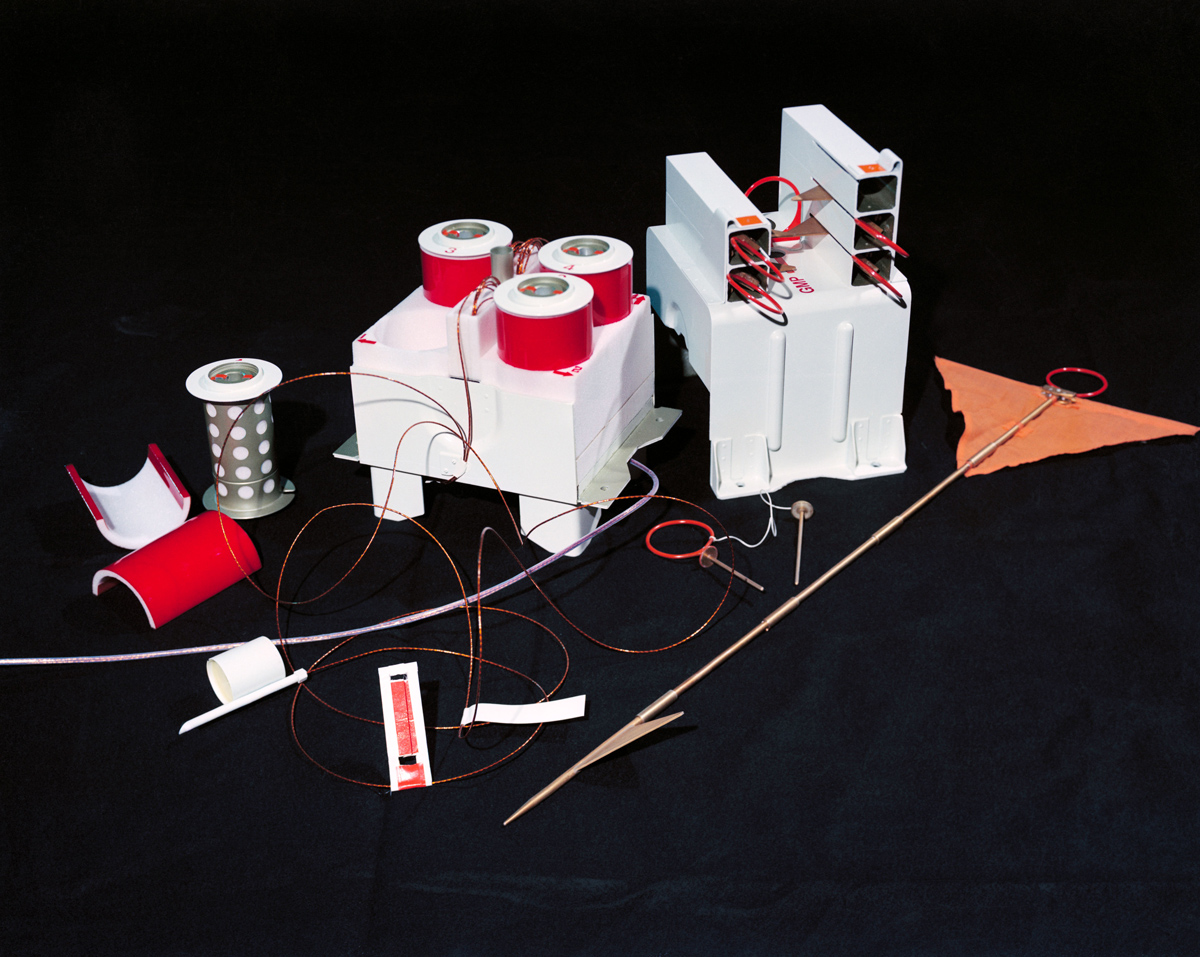
The Apollo 17 lunar landing mission includes this Geophone Module and Cable Reels for the LSPE experiment. The experiment uses 4 geophones to collect seismic data and meteorite hits on the moon.
Proving Einstein's theories
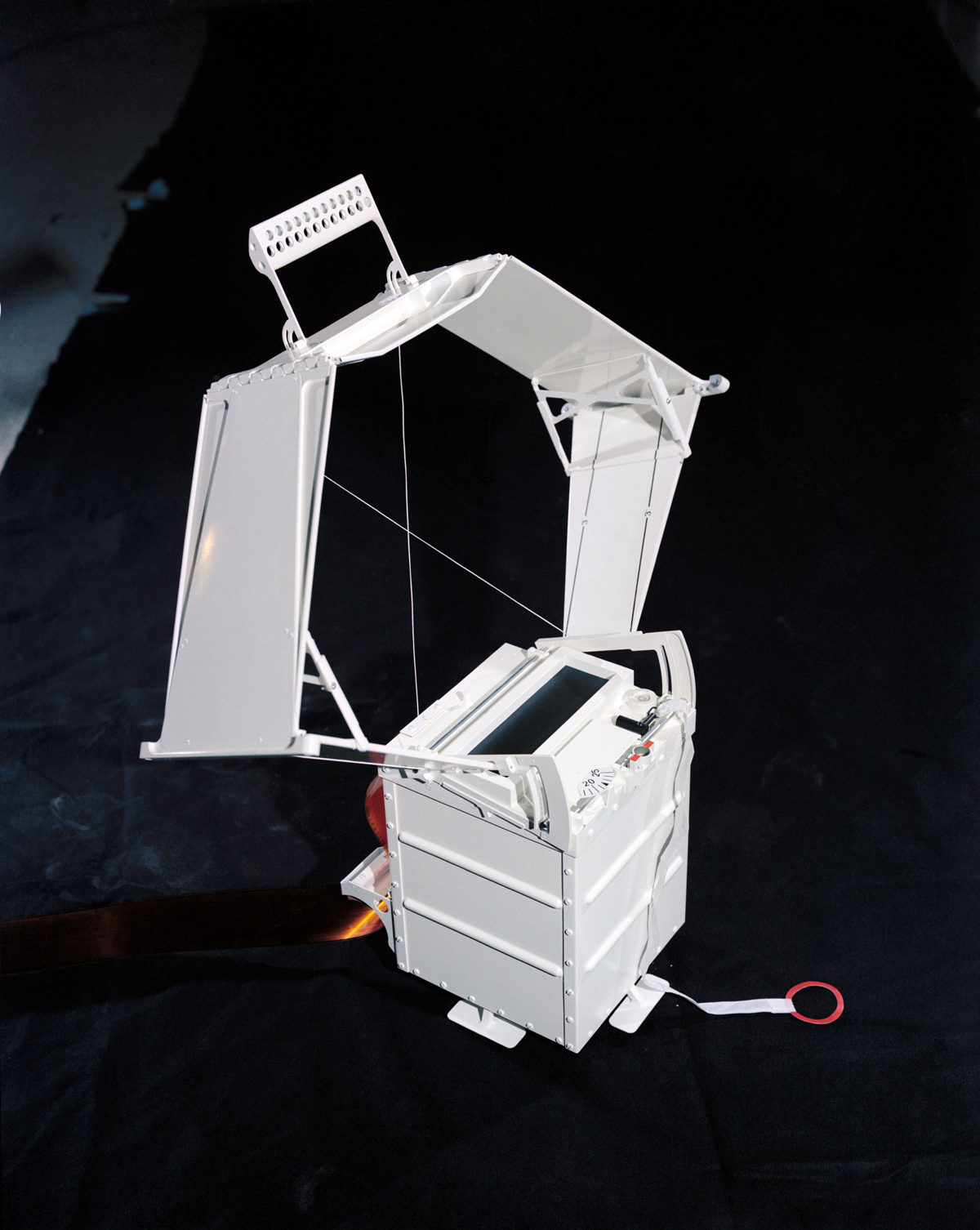
Using the Lunar Surface Gravimeter, or LSG, the Apollo 17 lunar landing mission aims to confirm a gravity waver, as Einstein predicted in the general theory of relativity. Experts also expect to find additional insights regarding the moon's internal structure from data about tidal deformation in the lunar material from the Earth and the sun.
Scanning the moon
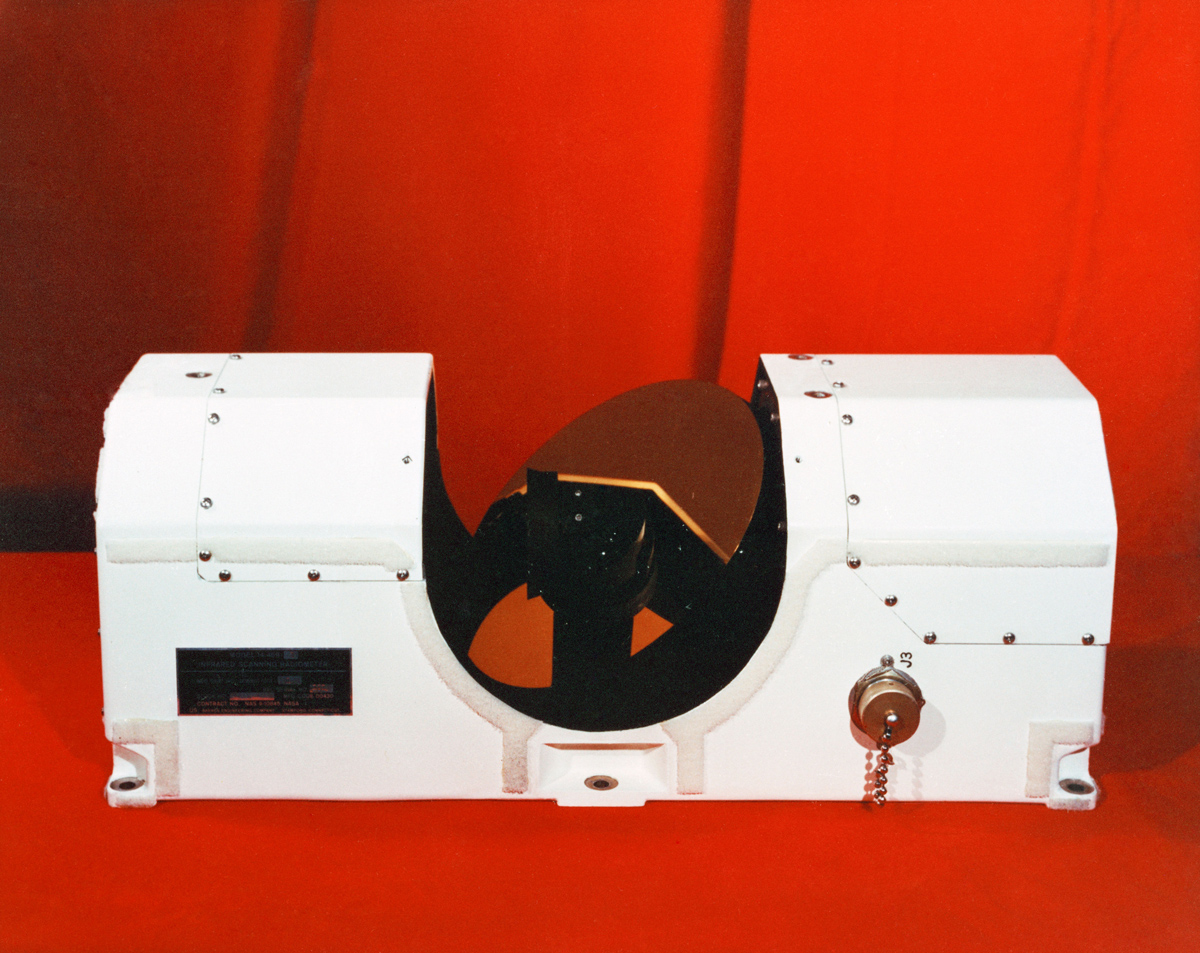
Additionally, the Infrared Scanning Radiometer, another Apollo 17 experiment, will scan the lunar surface, producing a surface temperature map. The ISR map will likely aid in defining lunar features such as rock fields, crustal structural differences, volcanic activity and fissures releasing "hot" gases.
Lunar atmosphere information
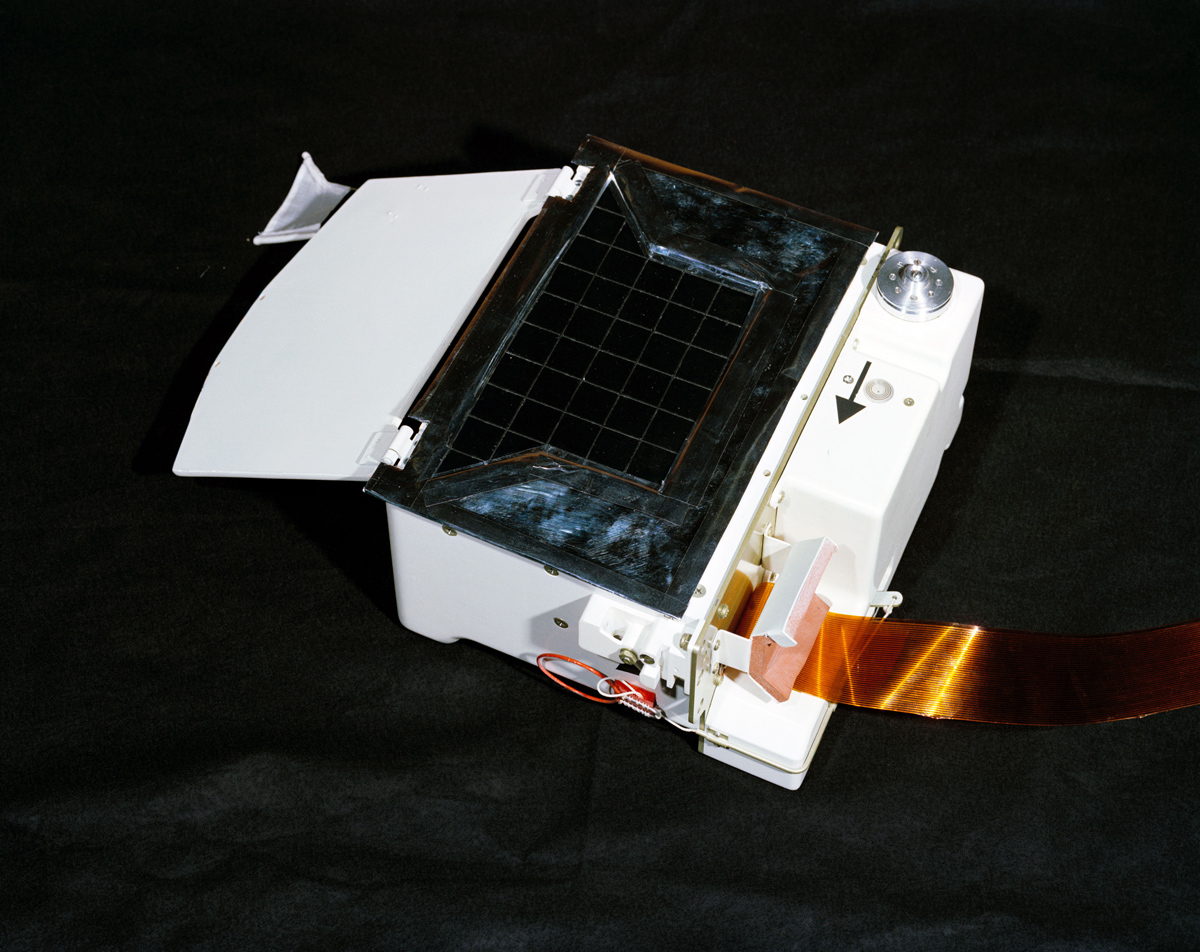
Using the Lunar Atmospheric Composition Experiment, the Apollo 17 crew till gather data about the ambient lunar atmosphere.
Lunar destinations
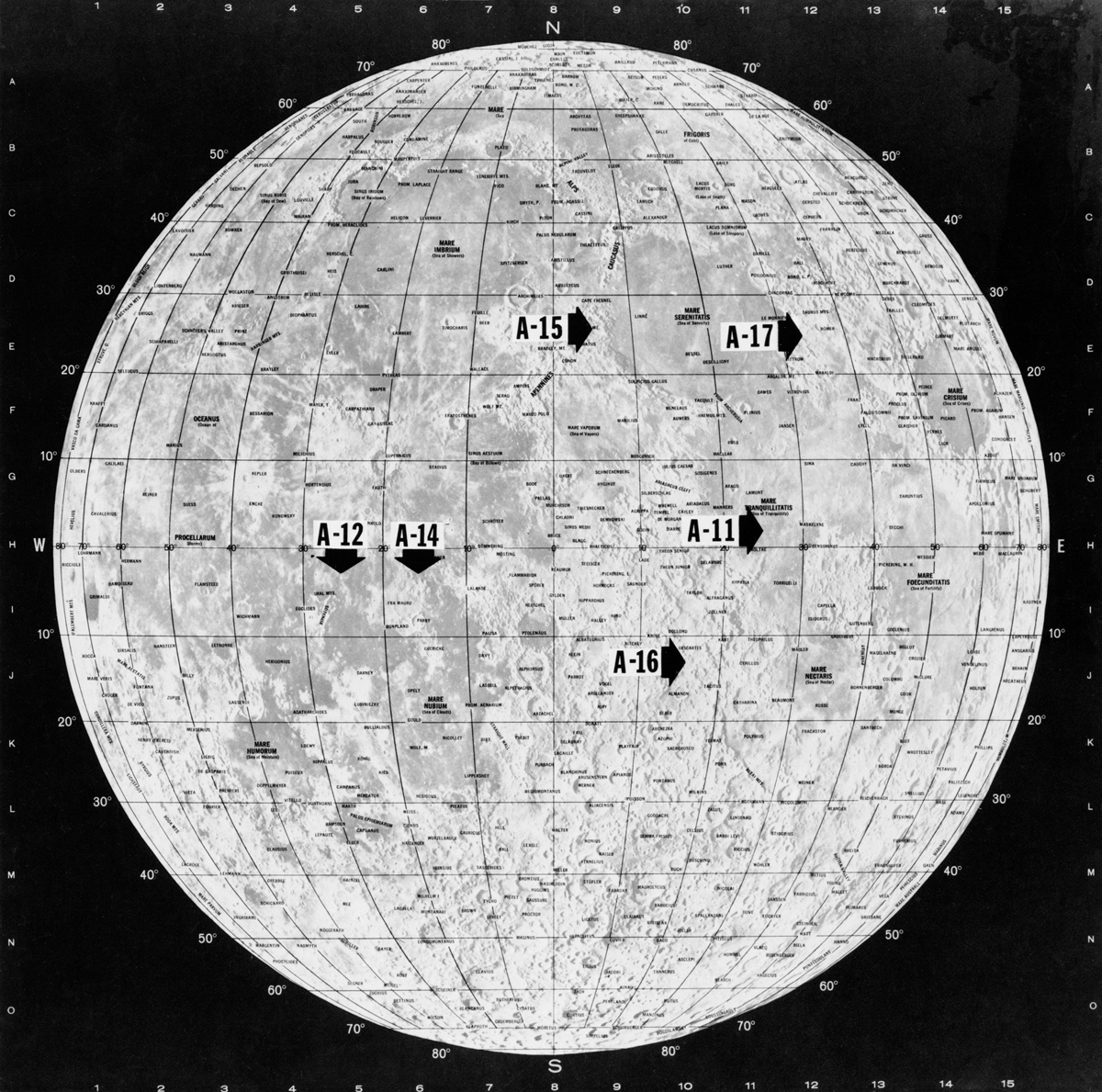
A map showing completed and projected Apollo landing sites was prepared by Mapping Sciences Laboratory, Science & Applications Directorate at the Manned Spacecraft Center.
Go time!
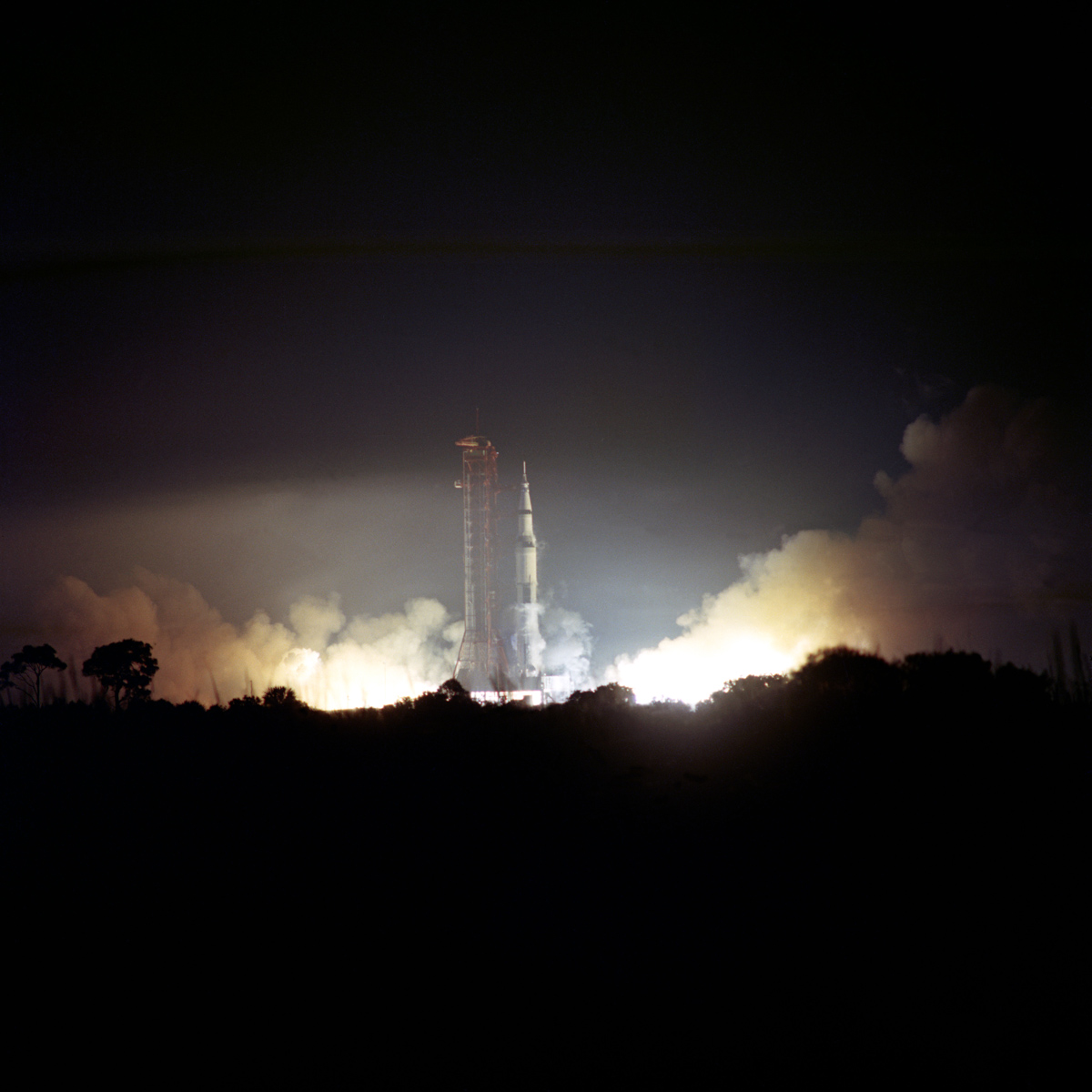
On Dec. 7, 1972, the 363-feet tall Apollo 17 space vehicle, consisting of Spacecraft 115, Lunar Module 12 and Saturn 512, launches from Launch Complex 39 Pad A. Apollo 17 is the final lunar landing mission in the Apollo program and the first nighttime liftoff of a Saturn V launch vehicle.
Astronaut Harrison H. Schmitt
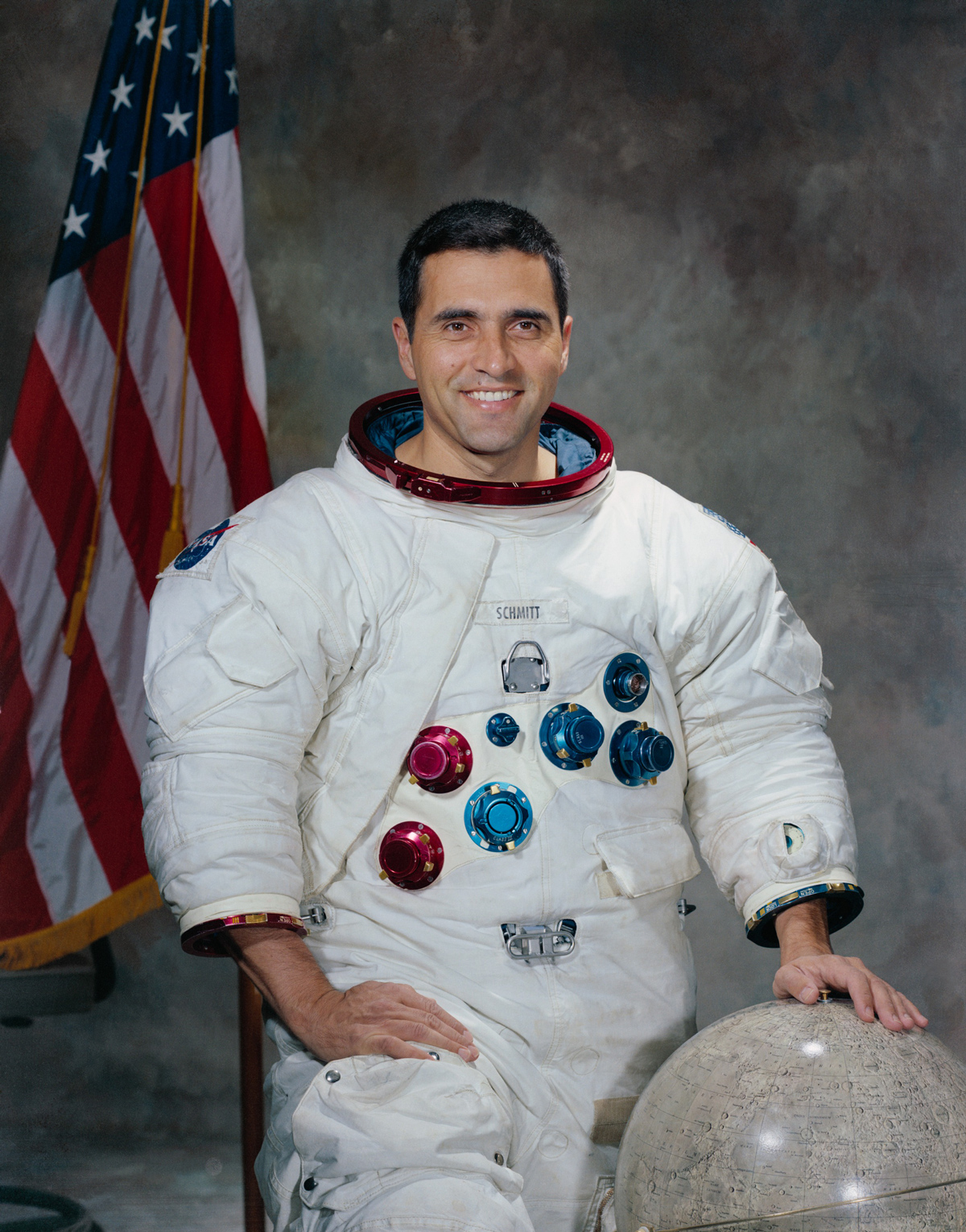
In this official NASA photo, Astronaut Harrison H. Schmitt, lunar module pilot for the Apollo 17 lunar landing mission prime crew, poses.
Astronaut Eugene A. Cernan
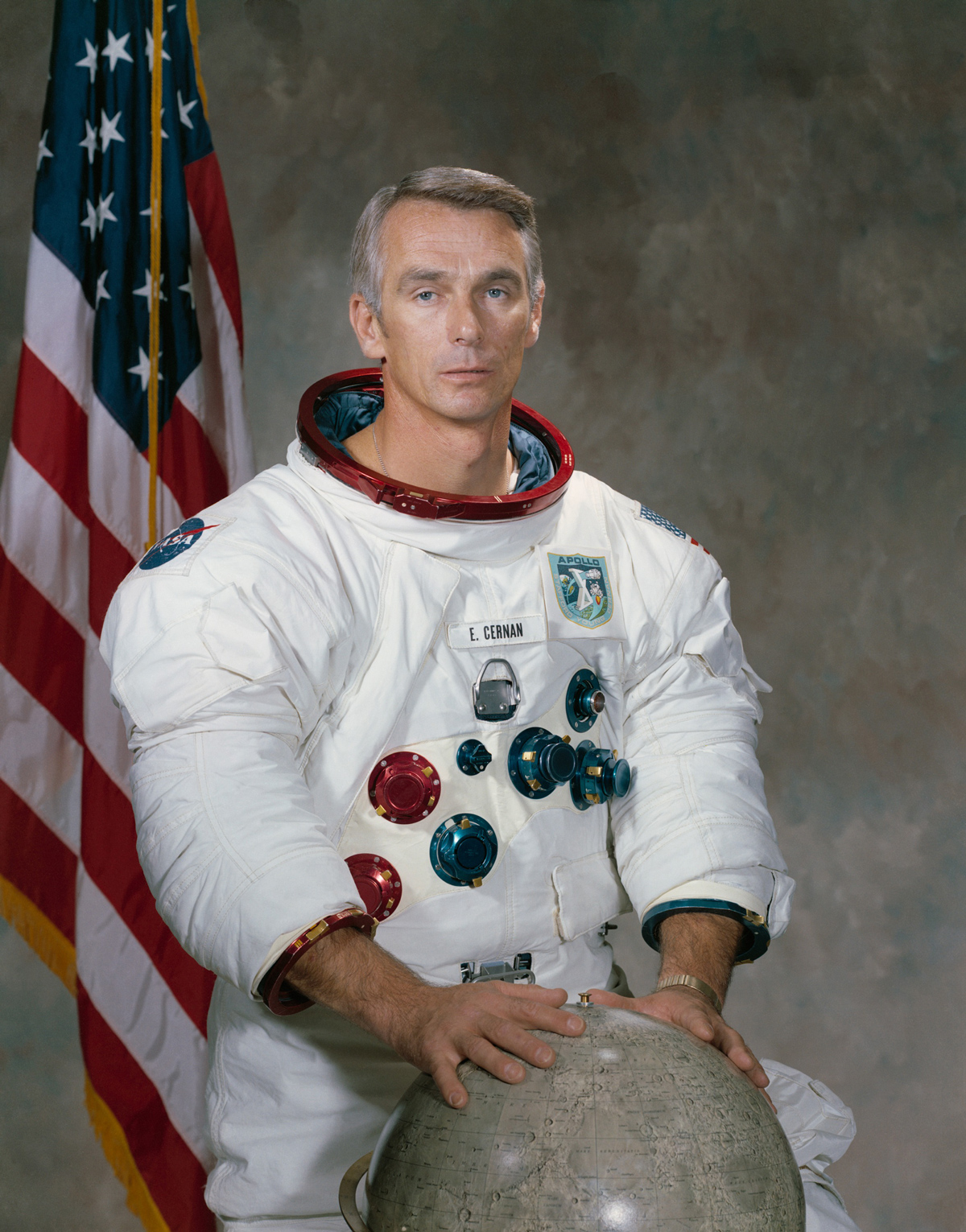
Apollo 17 prime crew commander, astronaut Eugene A. Cernan poses in an official NASA photo.
Astronaut Ronald E. Evans
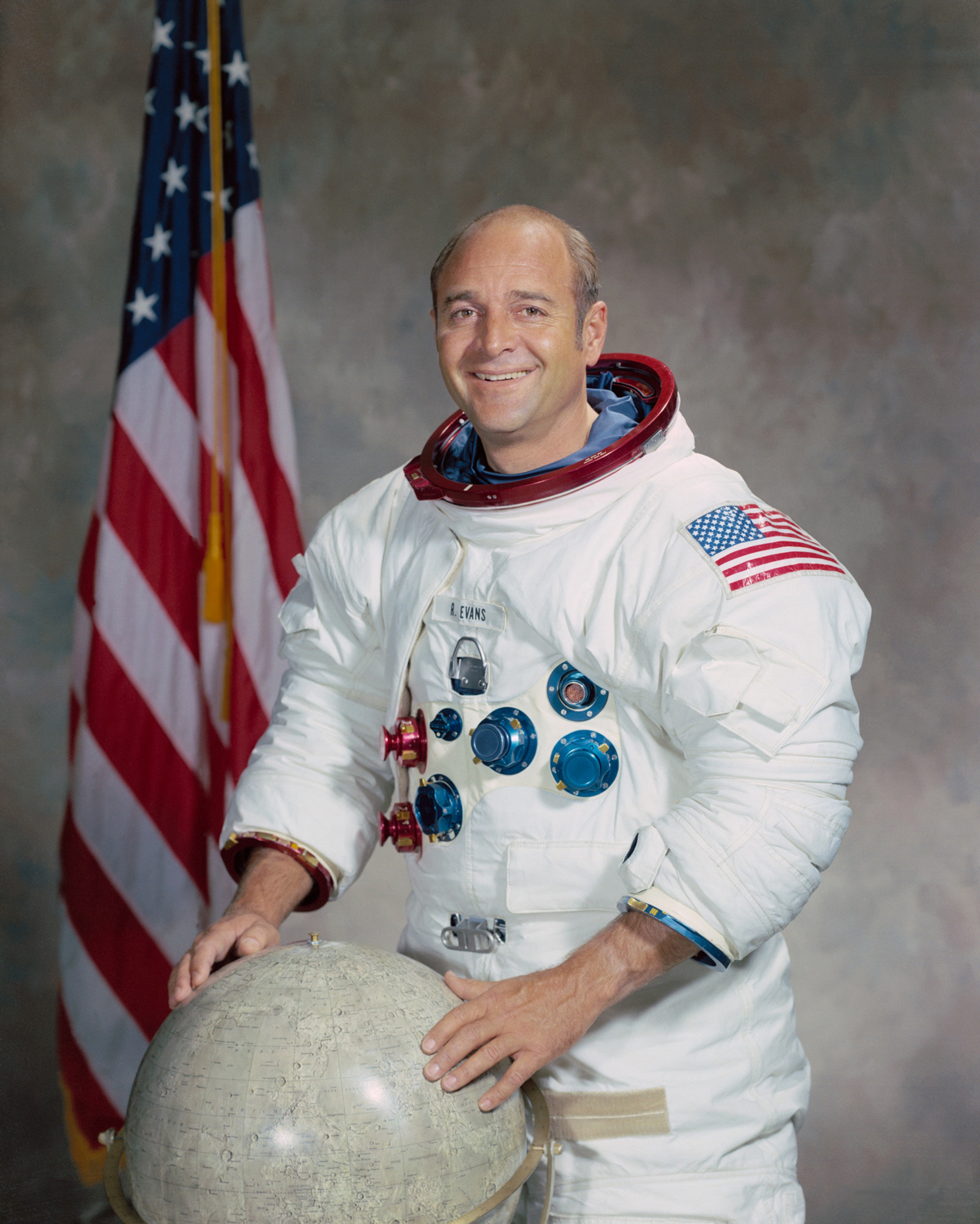
Astronaut Ronald E. Evans poses in this official NASA photo. Evans is a member of the prime crew for the Apollo 17 lunar landing mission as the command module pilot.
Mealtime
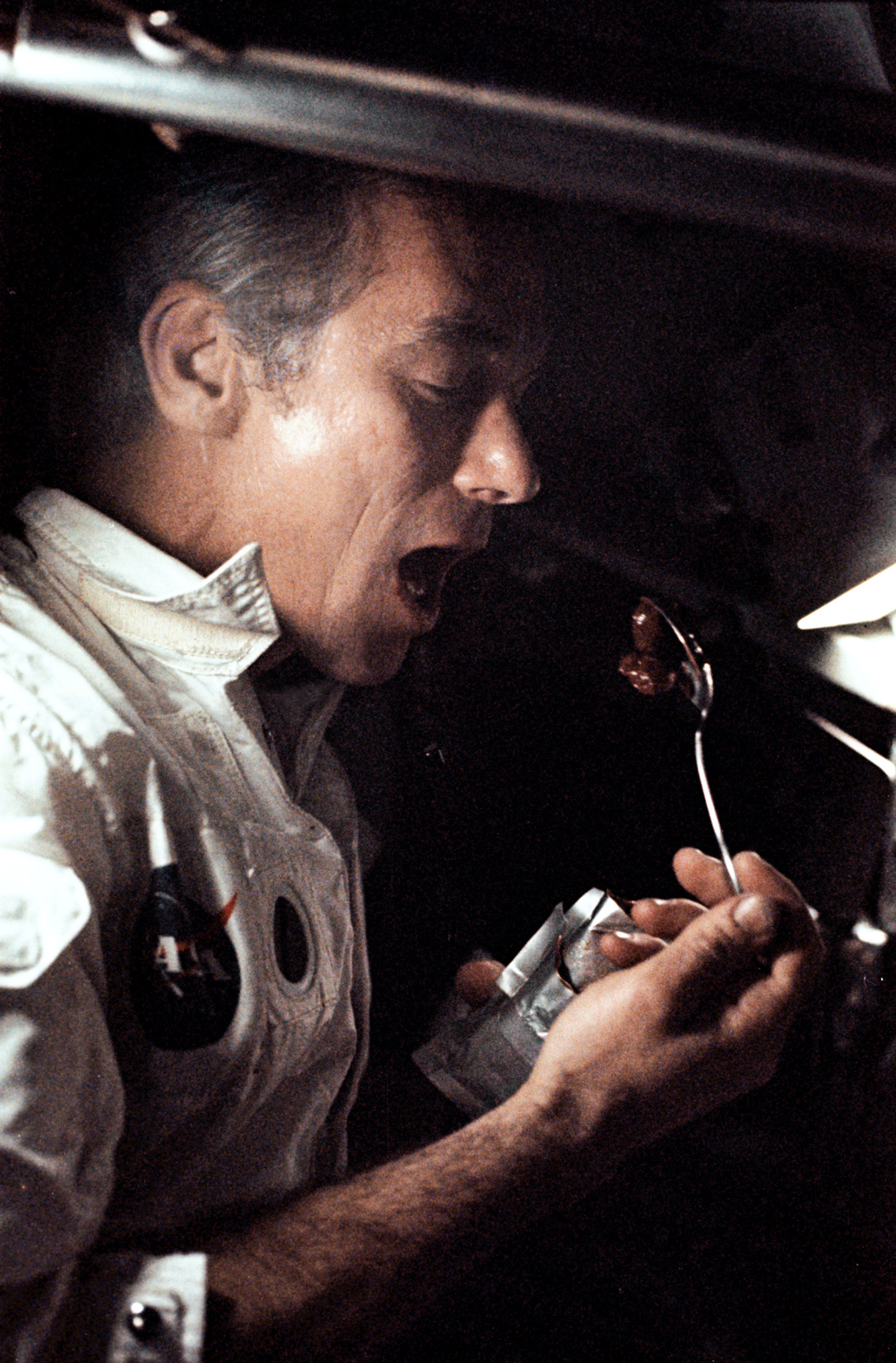
Astronaut Eugene A. Cernan eats in the weightlessness of space during the Apollo 17 mission, the final lunar landing mission of the Apollo program.
Peak-a-boo
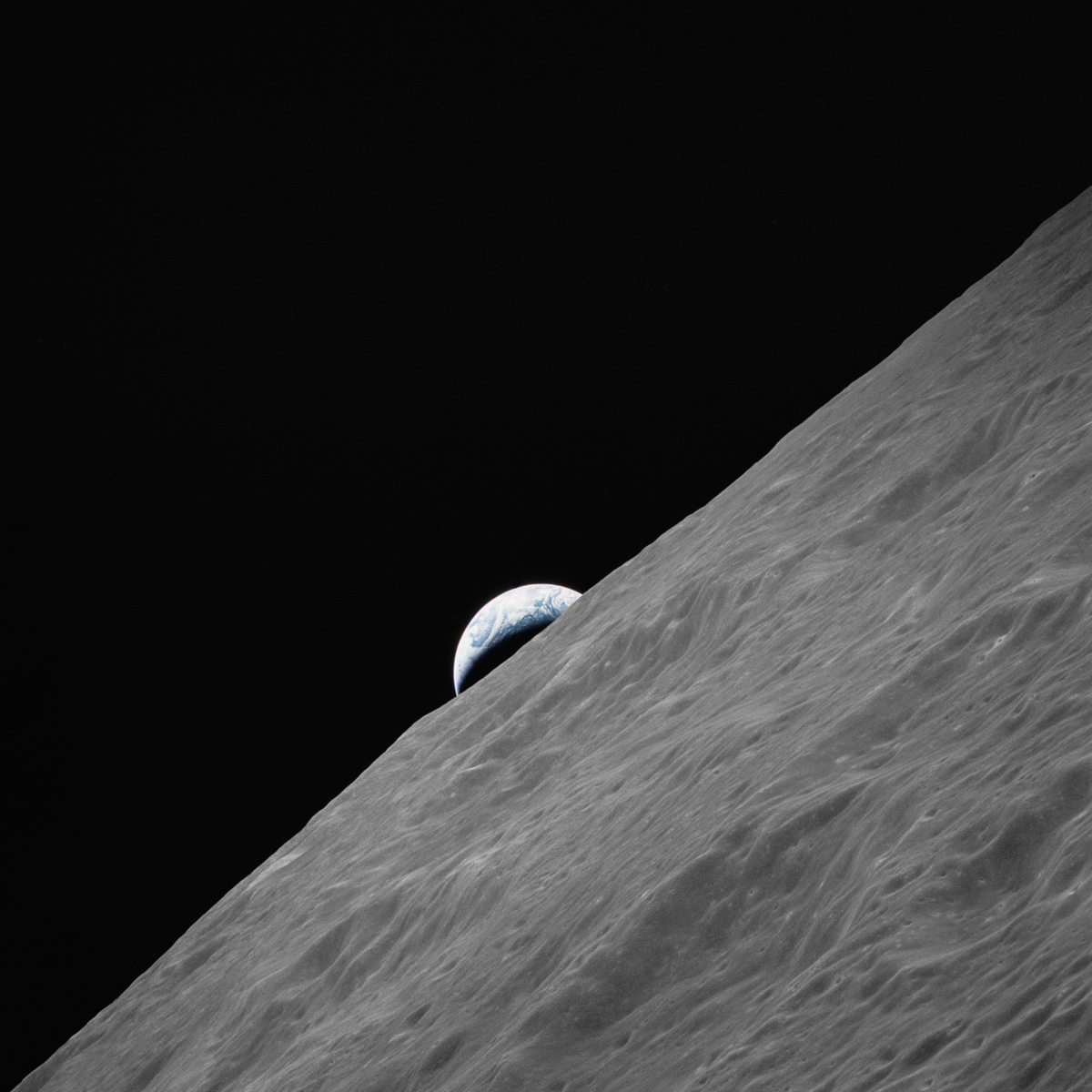
Earth rises above the lunar horizon captured during the Apollo 17 lunar landing mission.
From lunar orbit
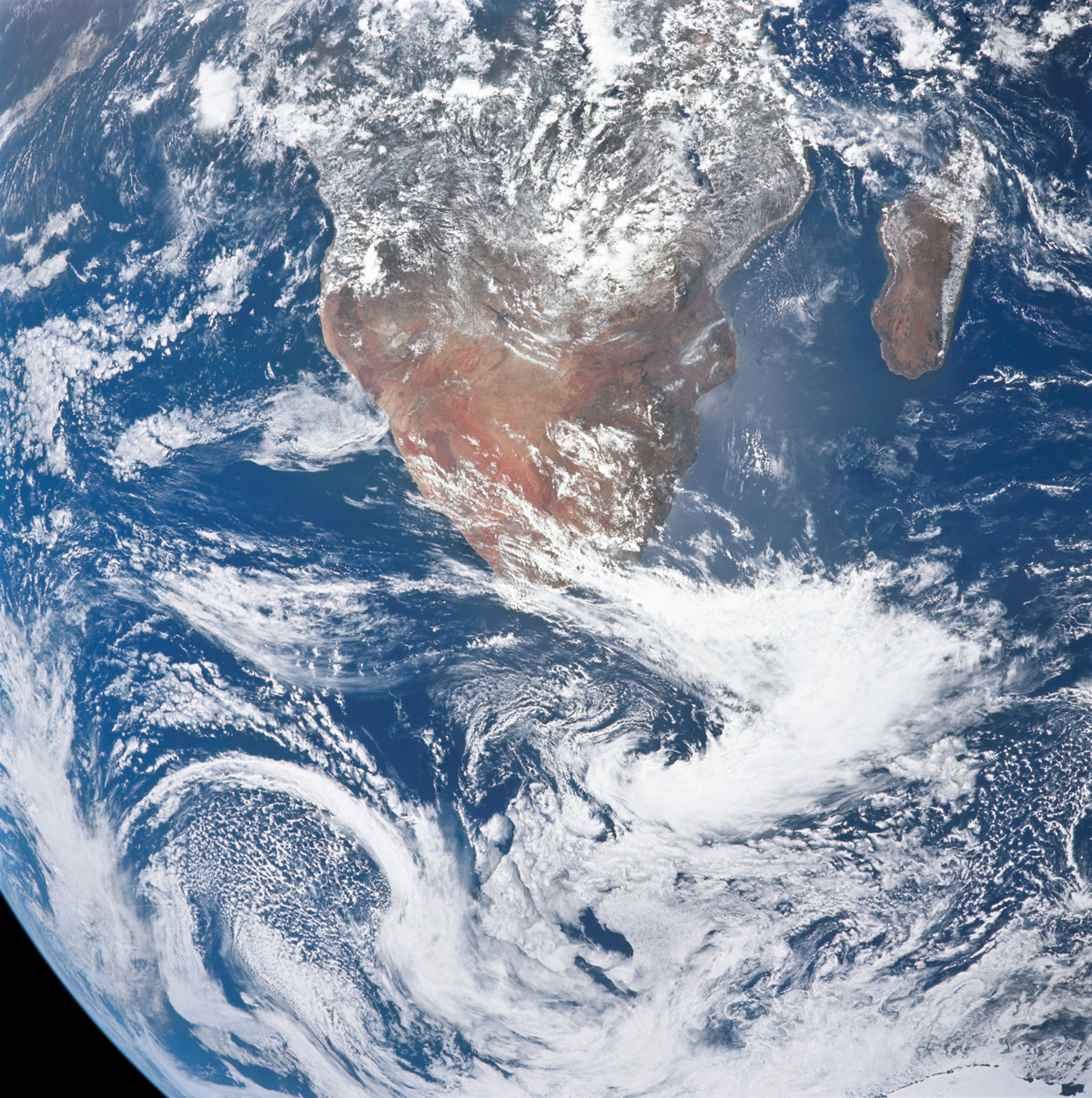
As Apollo 17 headed toward the moon, a crewmember snapped this image of Earth highlighting the African continent, Madagascar, to the right, and a bit of Antarctica near the bottom.
Farewell for now
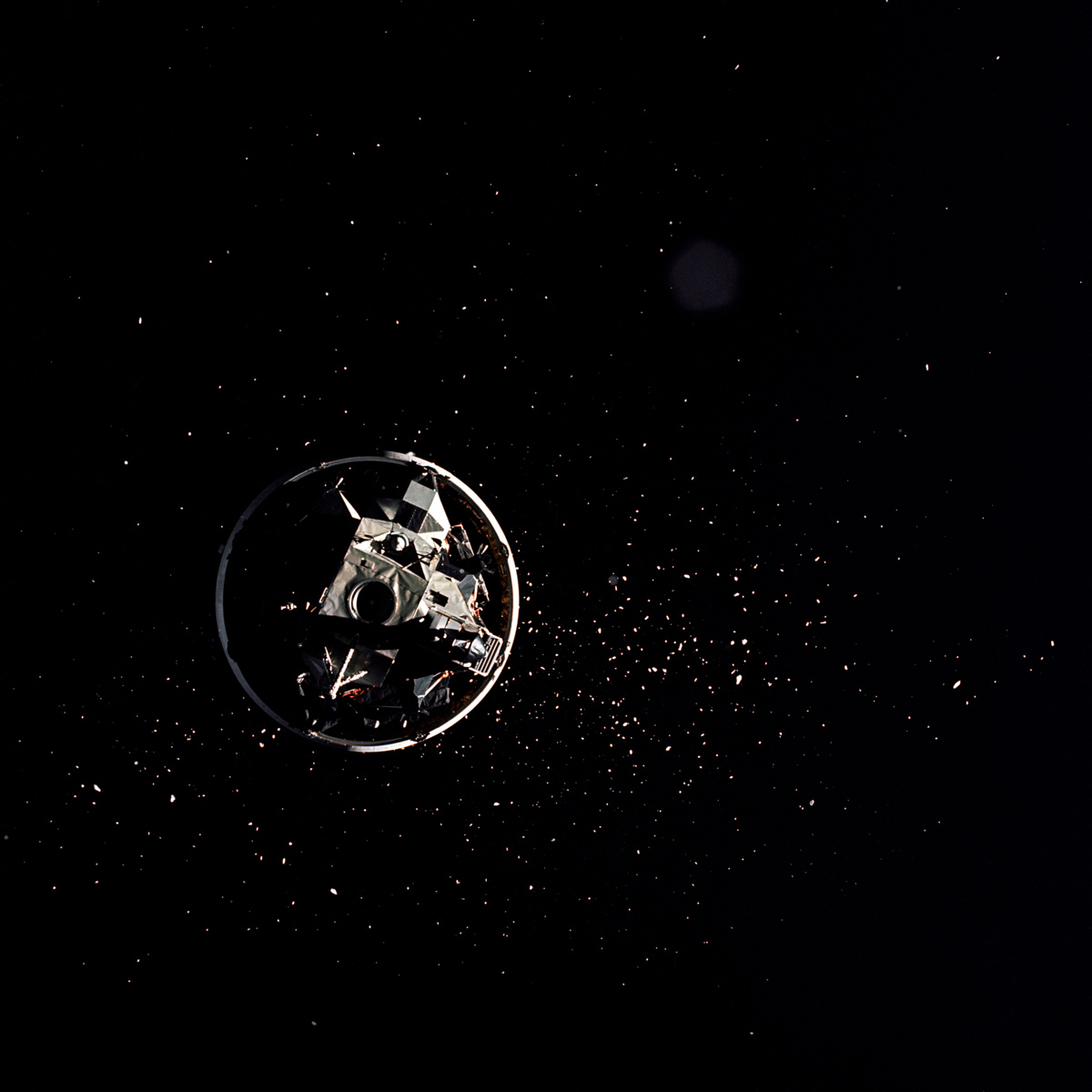
After the Apollo 17 Lunar Module transposed and docked, debris floated into space from Saturn S-IVB stage separation.
On the surface

The LSP geosphere flag stands in the lunar surface with the gnomon in the foreground. In the background the Apollo Lunar Scientific Experiments Package, north Massif and the Lunar Roving Vehicle are visible.
A handy tool
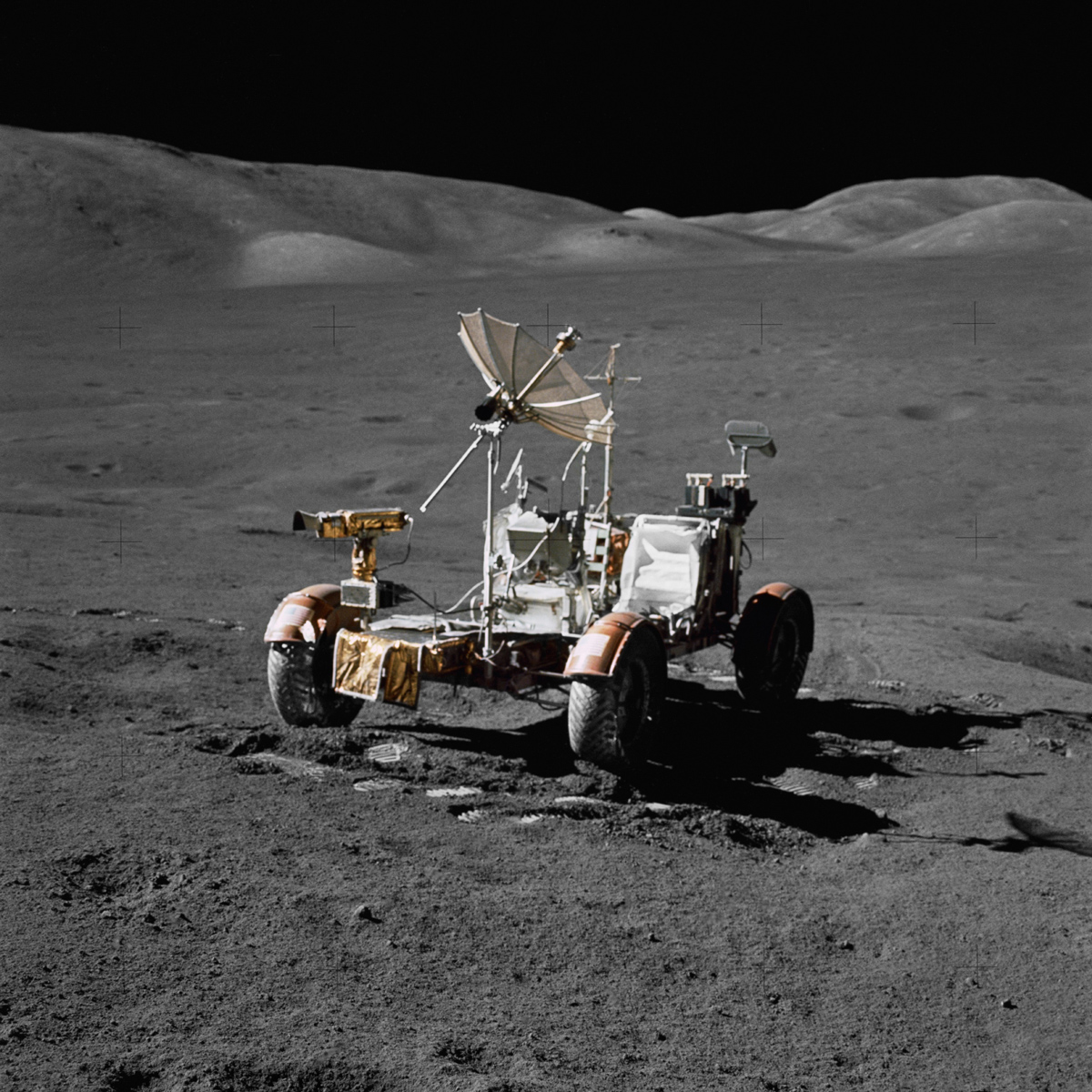
The Apollo 17 lunar landing crewmates, astronauts Eugene A. Cernan and Harrison H. Schmitt, used the Lunar Roving Vehicle extensively during their research on the lunar surface.
Big boulder
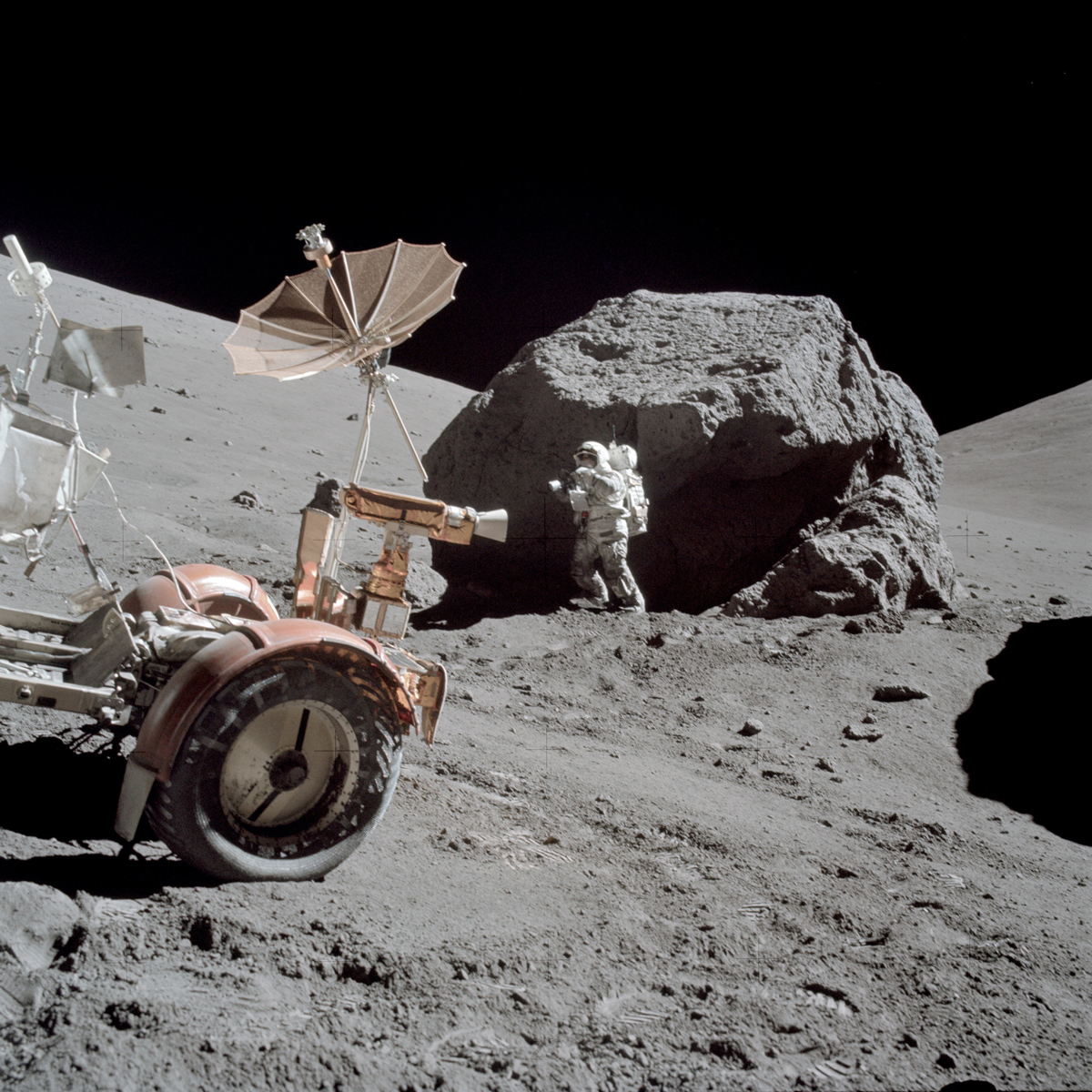
On the left, the Lunar Roving Vehicle peaks into the photo where scientist-astronaut Harrison H. Schmitt collects samples near a large boulder.
Between stages
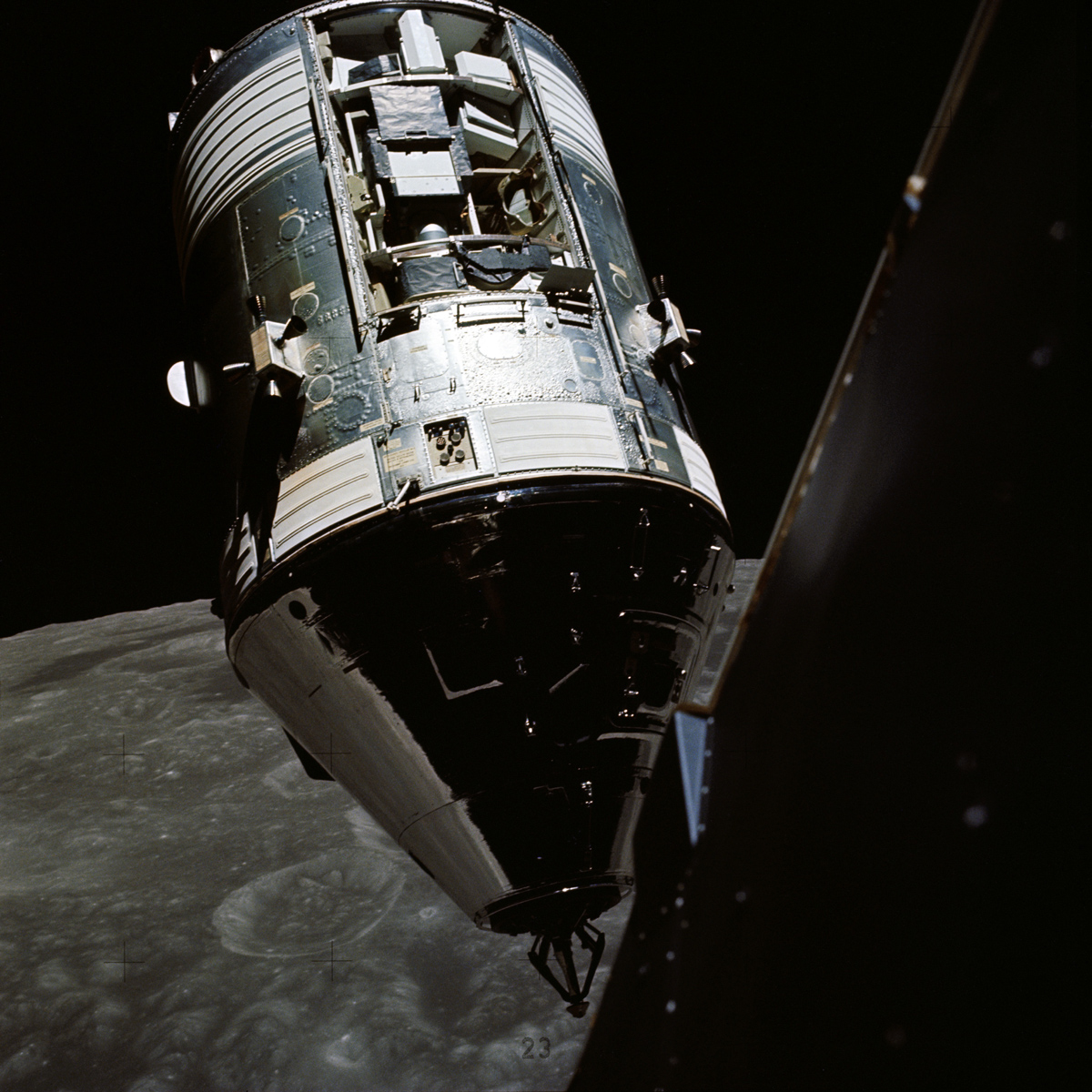
The Apollo 17 Command and Service Modules, containing astronauts Eugene A. Cernan and Harrison H. Schmitt aboard, has completed rendezvous and docking maneuvers. The Scientific Instrument Module of the Service Module contains three experiments — the lunar sounder, the infrared scanning spectrometer and the far-ultraviolet spectrometer.
Lunar samples
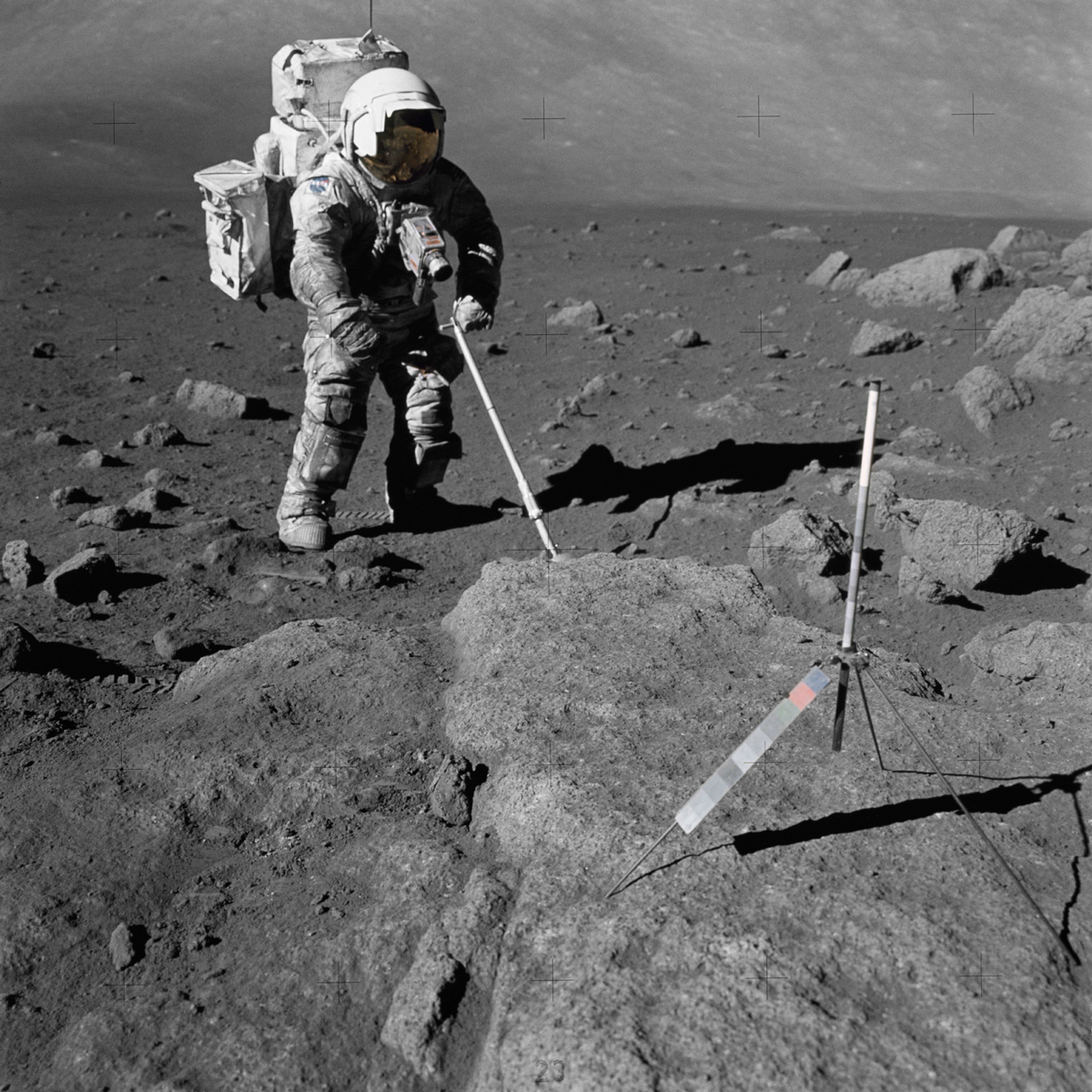
During the second EVA of the Apollo 17 mission, scientist-astronaut Harrison Schmitt collects lunar soil and rock samples for study. In the image, NASA tools are visible: the gnomon in the foreground on a rock, a color scale, a scoop and more.
Desolate vista
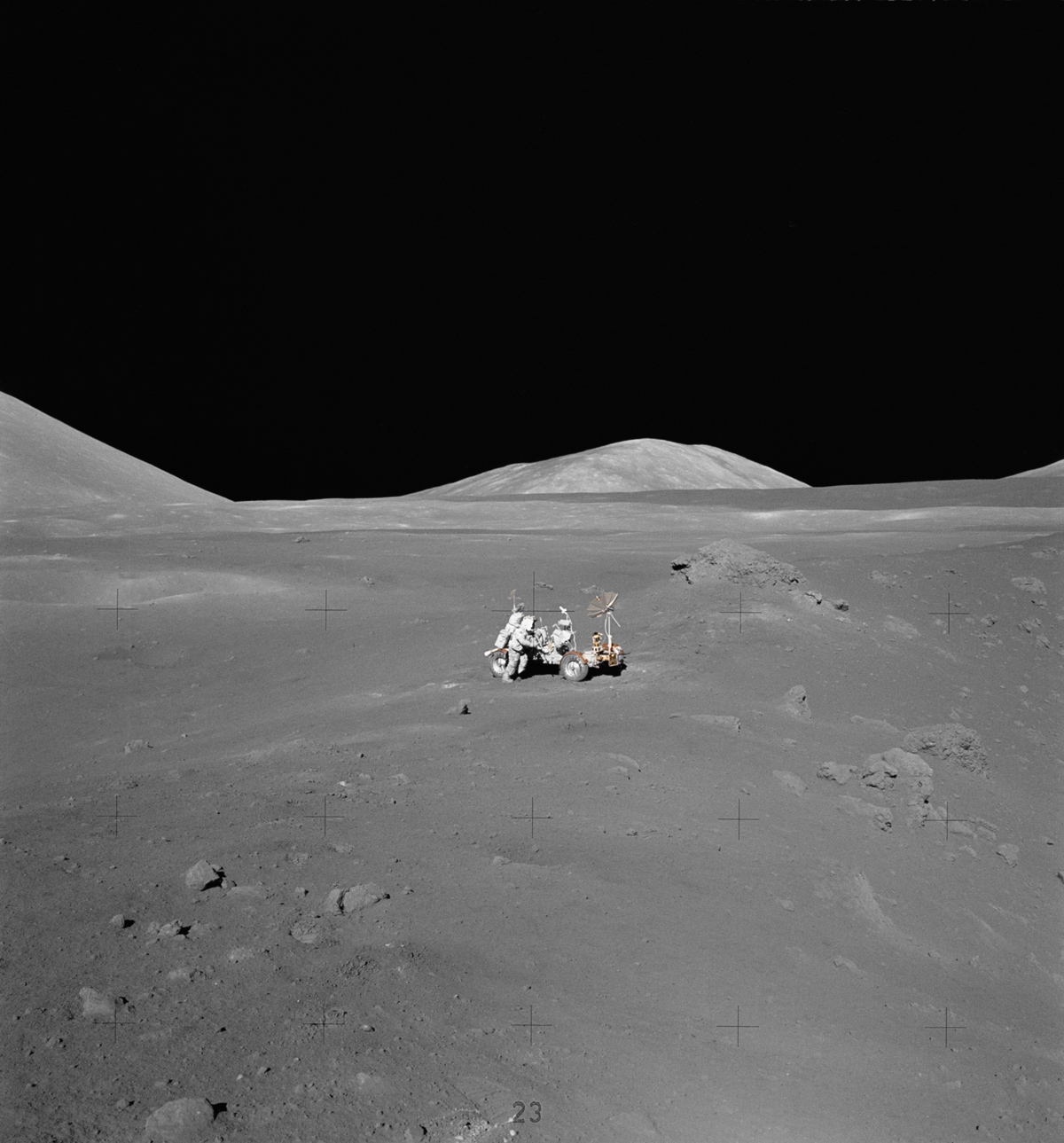
Across the desolate lunarscape the Lunar Roving Vehicle breaks up the dusty view. Astronaut Schmitt collects orange soil.
Smiles all round
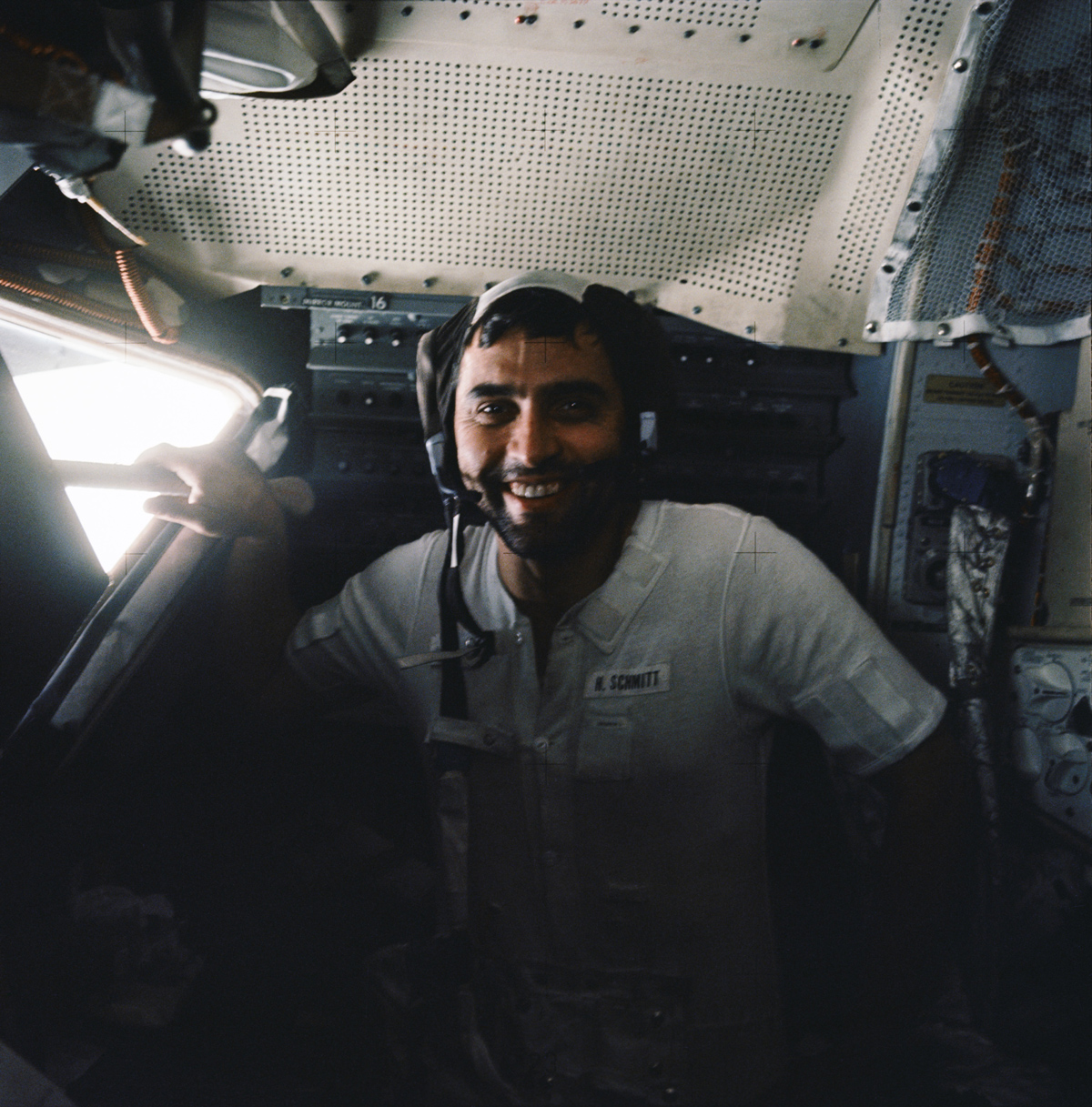
On Dec. 11, 1972, astronaut Eugene A. Cernan snapped this image of astronaut Harrison H. Schmitt with several days of growth on his beard.
Station 1 samples
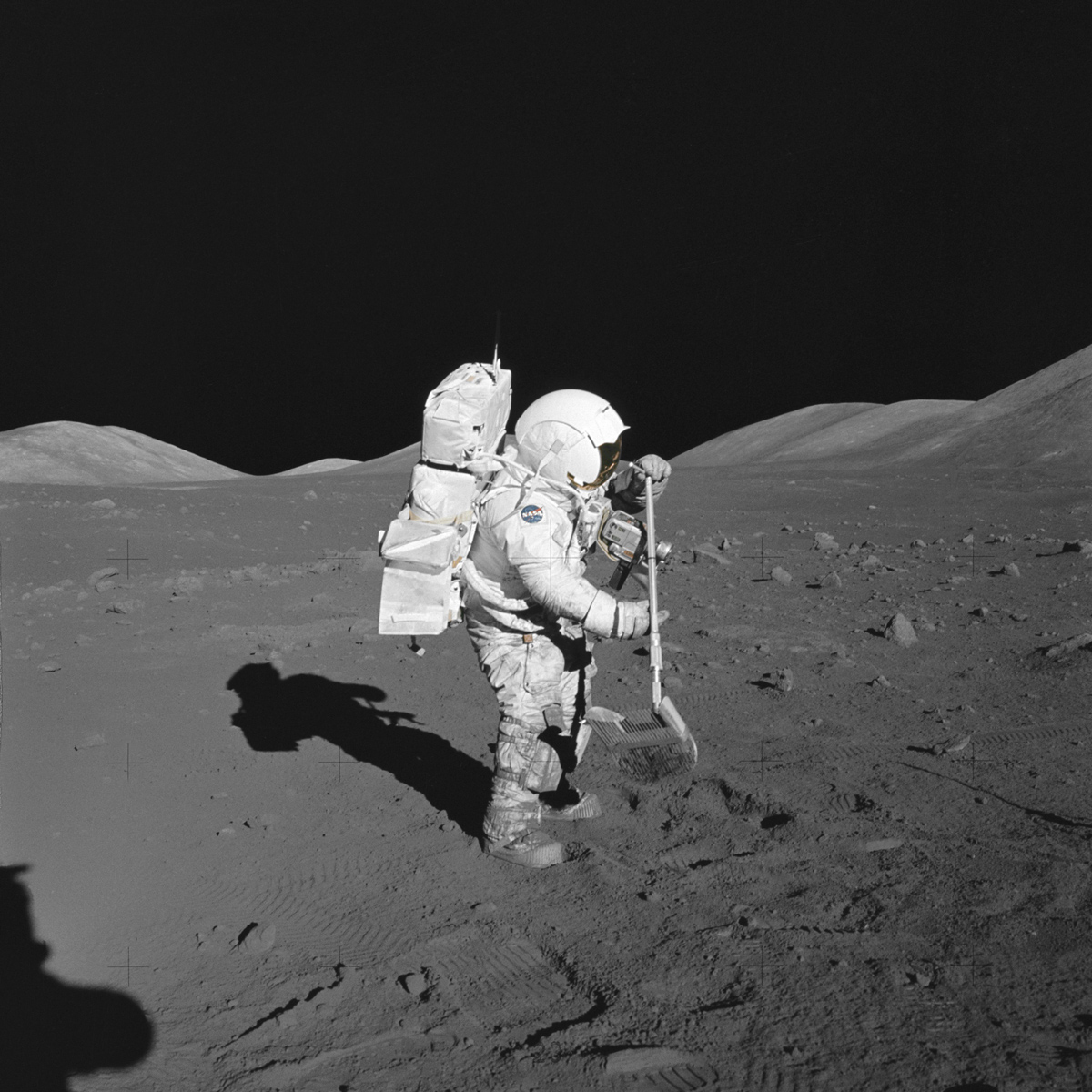
Astronaut Eugene Cernan captured and image of scientist-astronaut Harrison H. Schmitt collecting lunar rake samples.
Honoring the U.S.
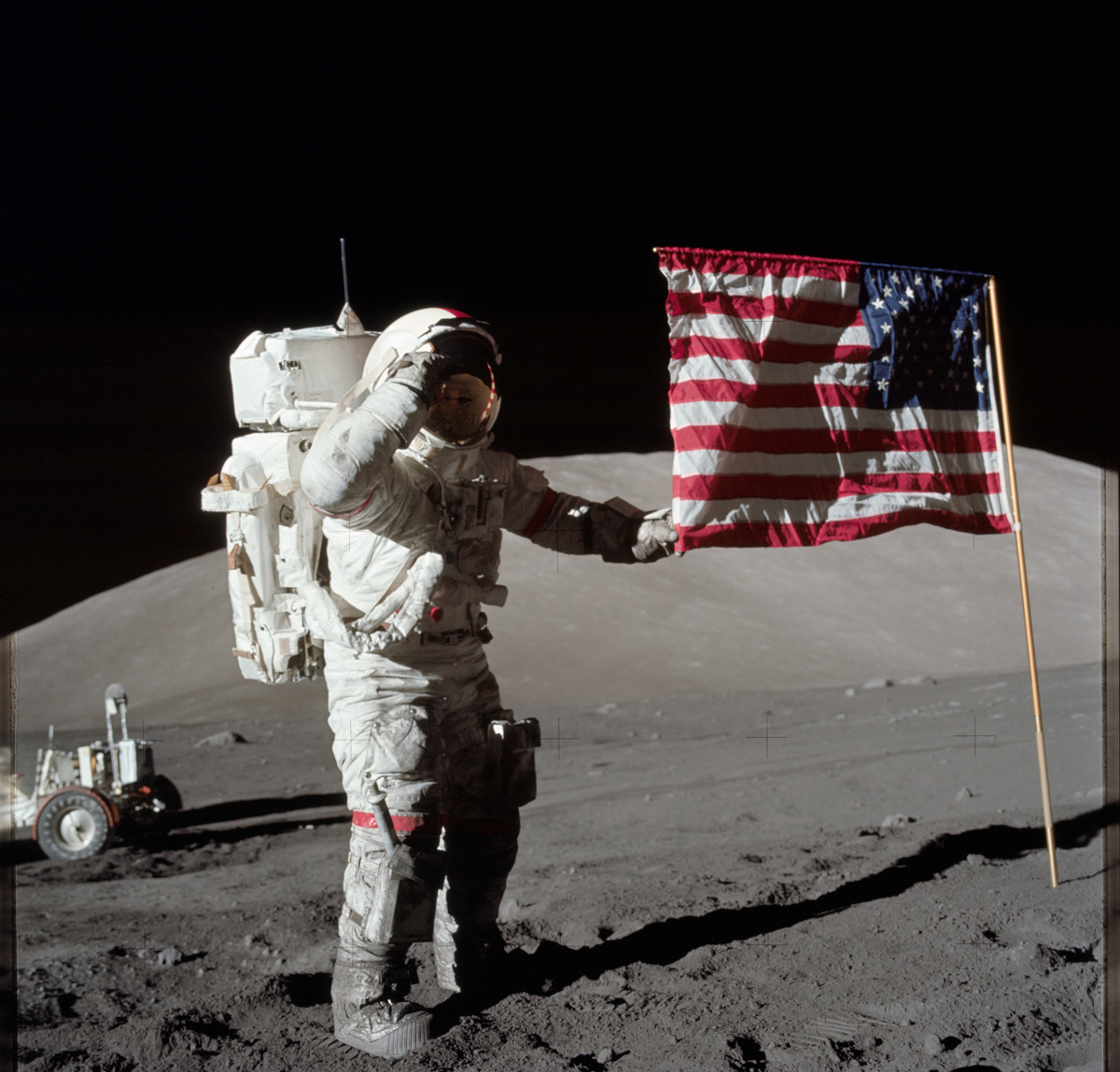
Scientist-astronaut Harrison H. Schmitt snapped an image of astronaut Eugene A. Cernan with the United States flag on the lunar service.
Lunar gloves
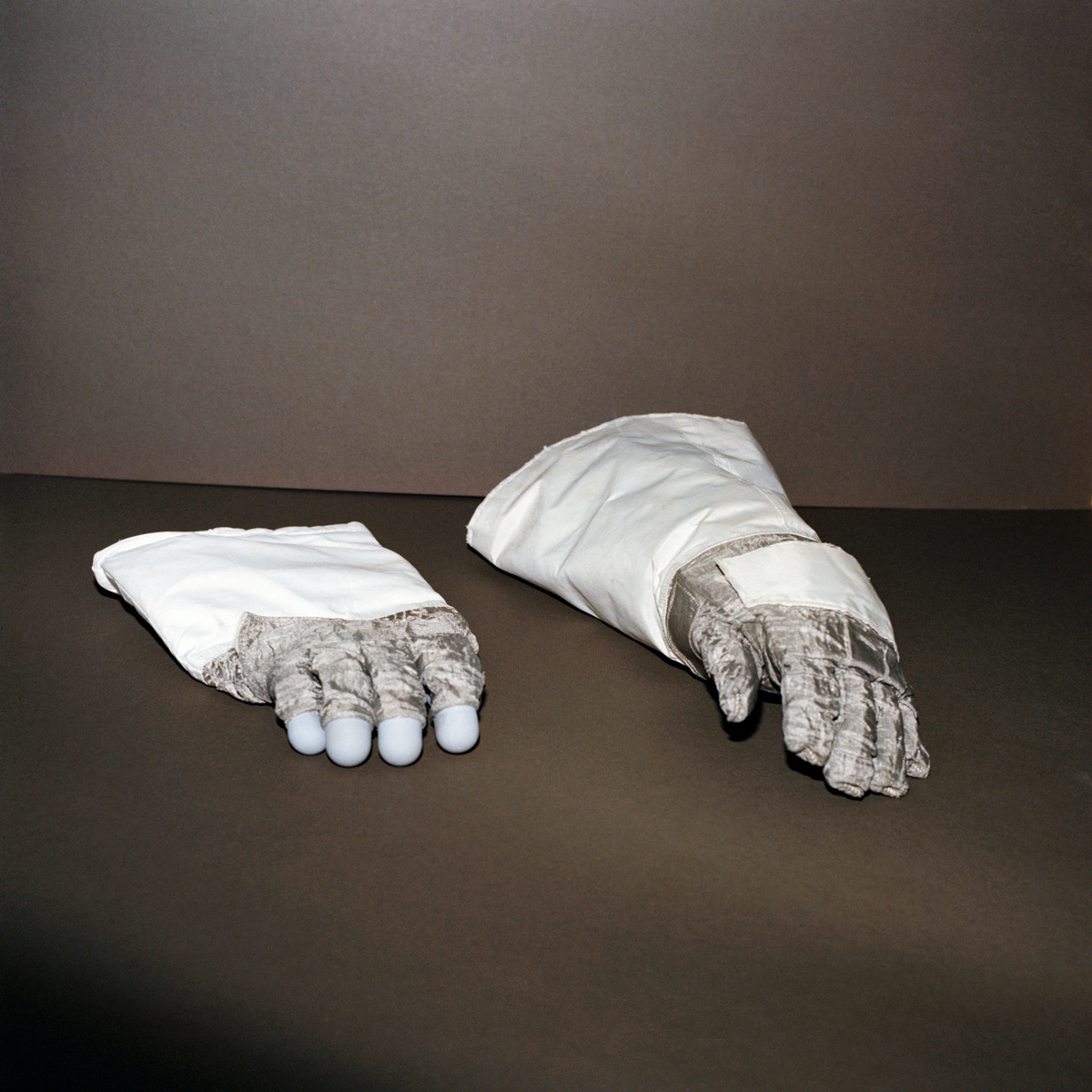
Astronauts wear specially designed gloves consisting of on inner and outer glove — the inner glove contains pressure bladders covered with Beta Cloth while the outer gloves include Beta Cloth, Mylar and a metallic mesh inthe hand area. For increased sensitivity, the thumb and fingertips are covered with molded silicone rubber. The inner gloves connect to the suit with pressure sealing rings and the outer gloves are designed to protect astronauts from micrometeorites, abrasions and heat.
Looking to the future
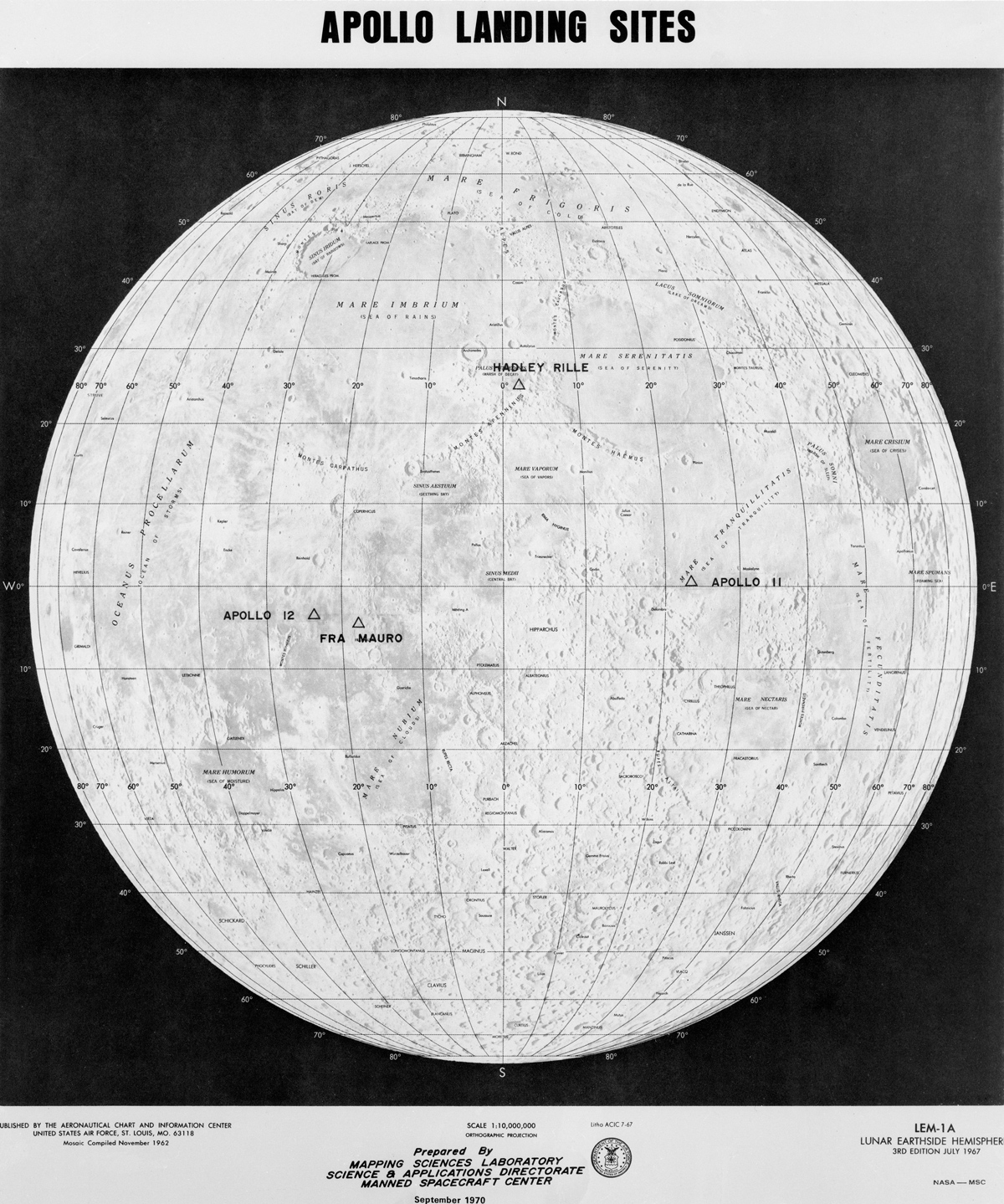
A map created by Mapping Sciences Laboratory, Science & Applications Directorate at the Manned Spacecraft Center reveals future landing sites for the Apollo missions.
Back to Earth
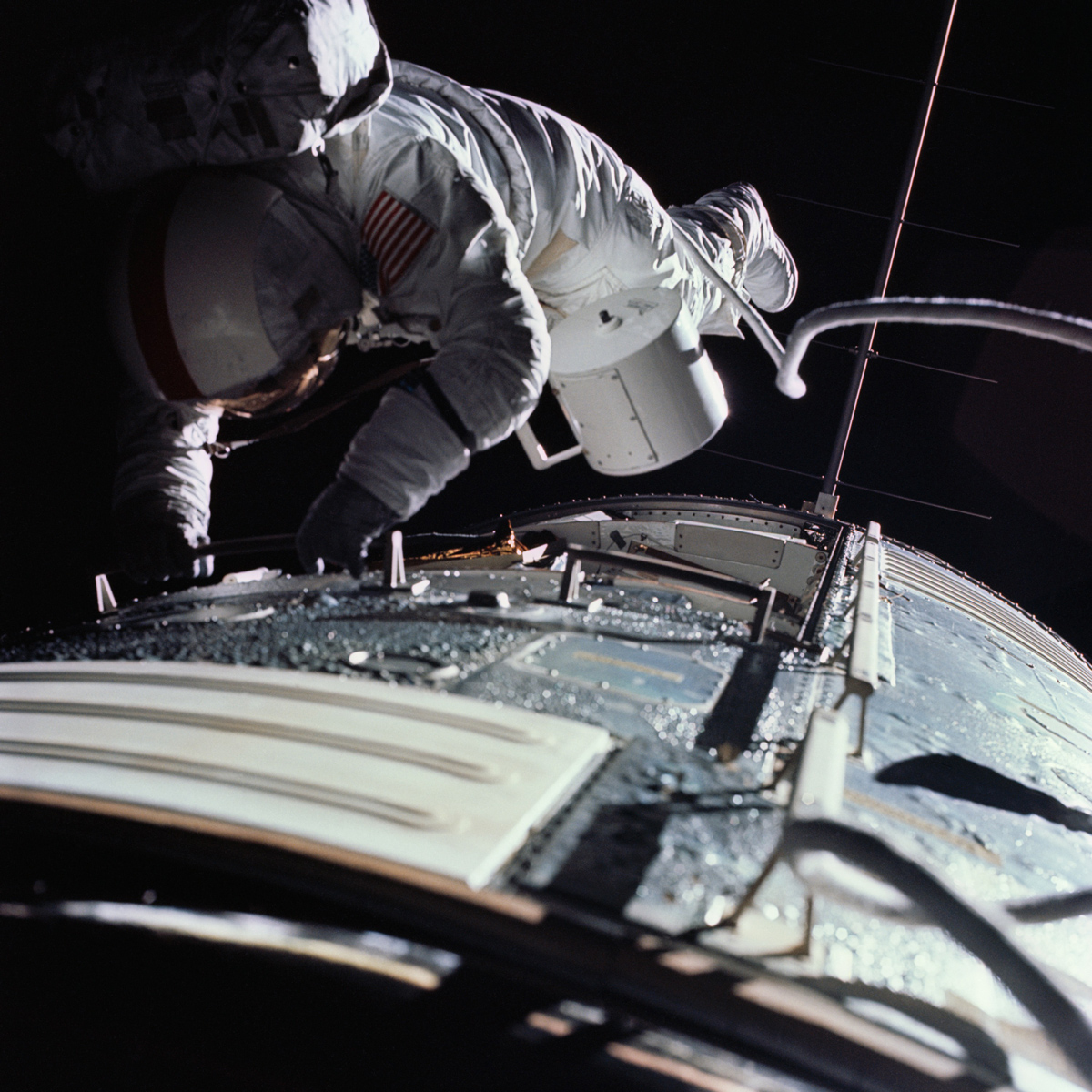
During the Apollo 17 spacecraft's coast back toward Earth, astronaut Ronald E. Evans completed an EVA retrieving film cassettes from the lunar sounder, mapping camera and panoramic camera for study on Earth.
Challenger
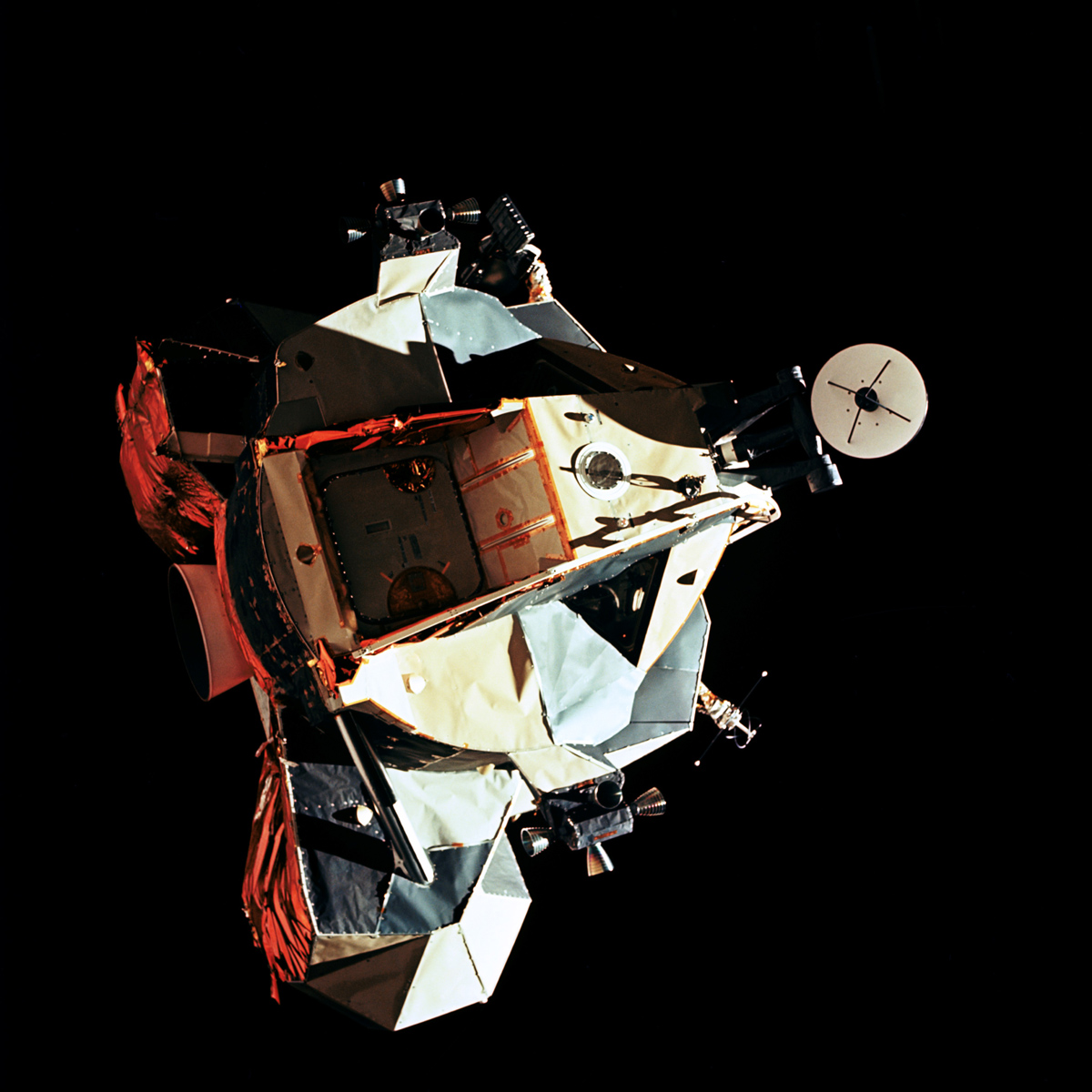
The Lunar Module for the Apollo 17 mission, named "Challenger" was captured with the 70mm camera while in the lunar orbit.
Time for a tune-up
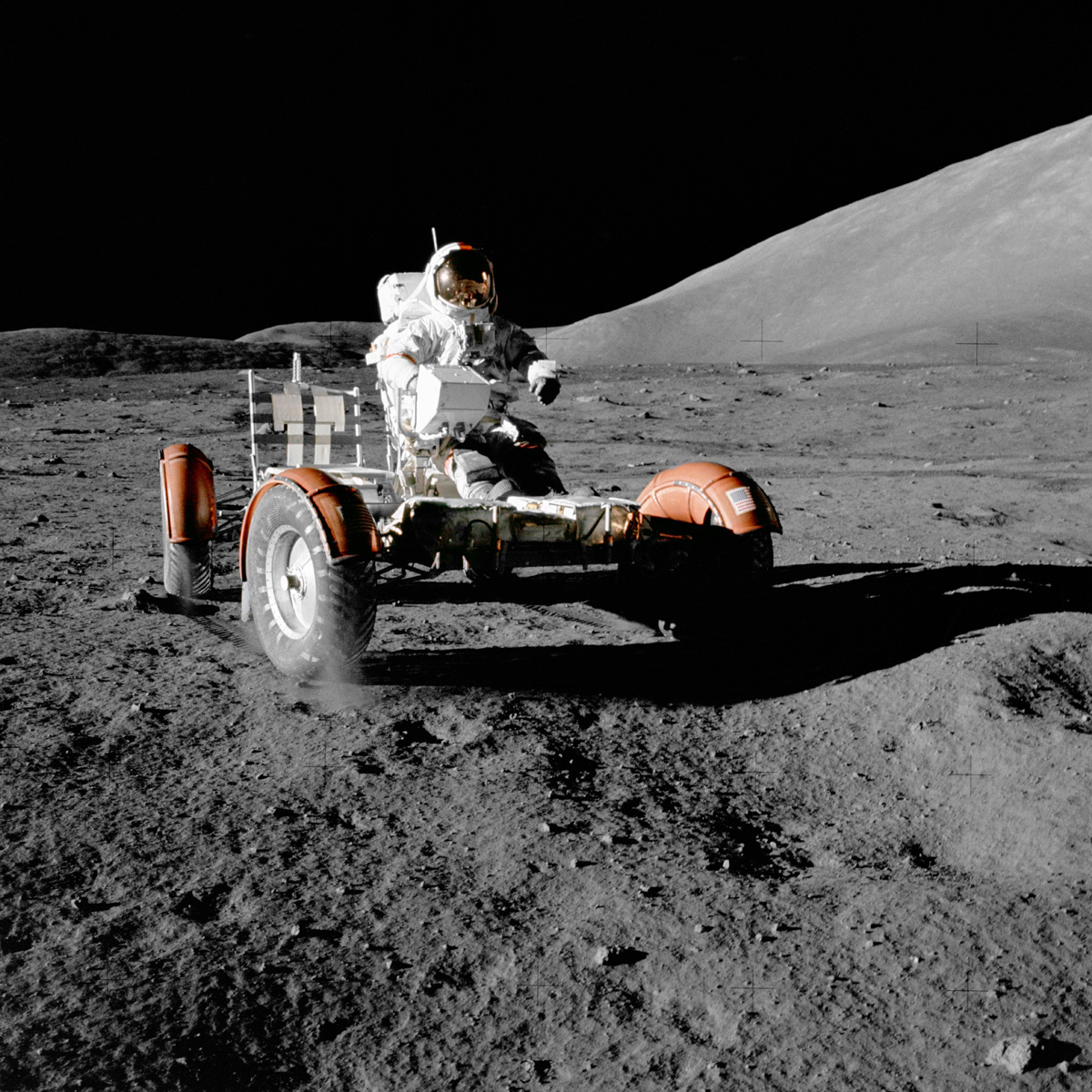
During the first EVA at the Taurus-Littrow landing site, astronaut Eugene A. Cernan looks over the LRV. The rover is seen prior to it being loaded up for research on the lunar surface.
A final look
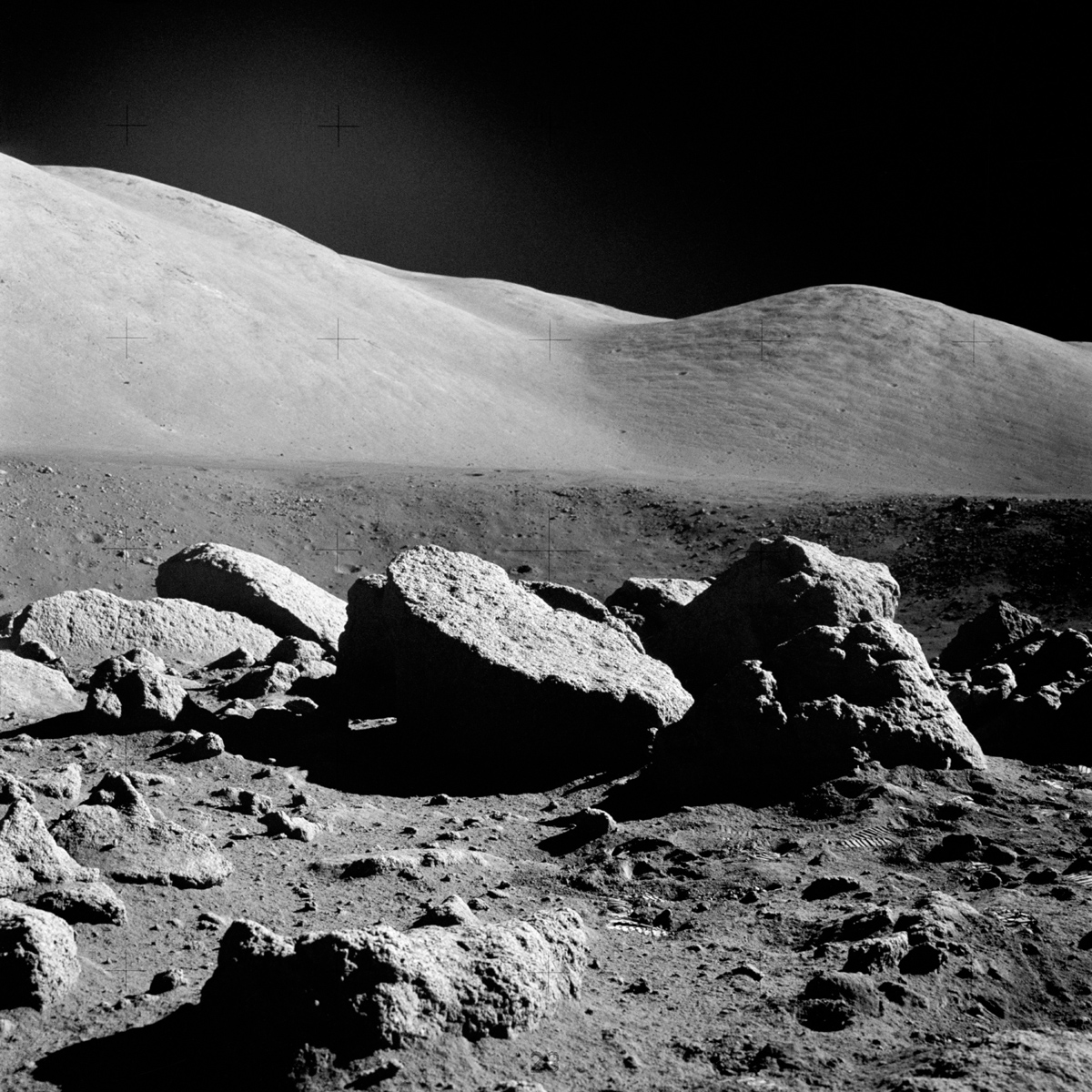
On the lunar surface on the Taurus-Littrow region of the moon, a group of boulders litter the lunarscape. This image was captured during Apollo 17, the final lunar landing mission of NASA's Apollo Program.
Getting work done
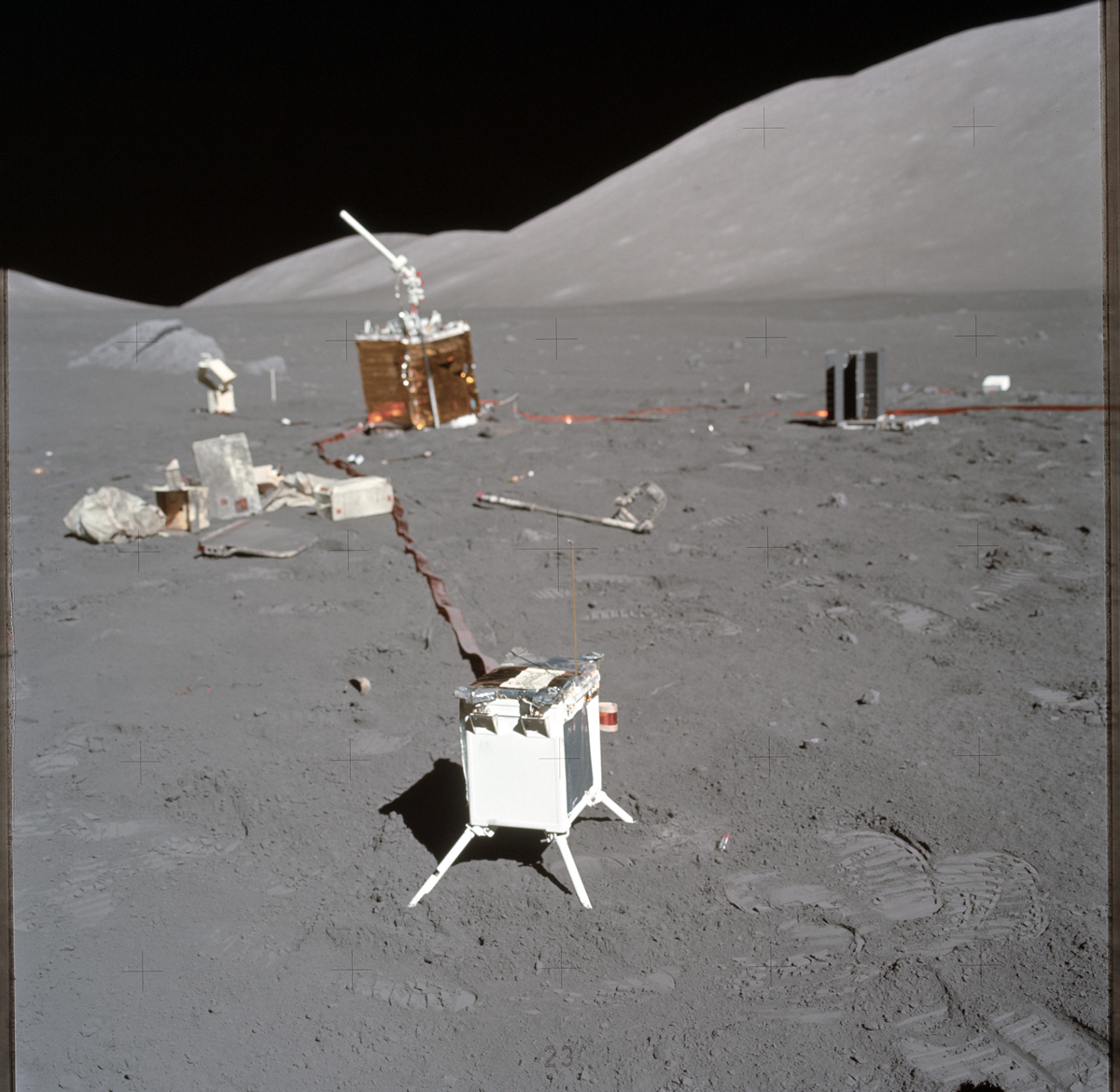
Here several of the Apollo Lunar Surface Experiments are seen on the lunar surface as the Apollo 17 crewmen deployed and left them.
Learning to maneuver
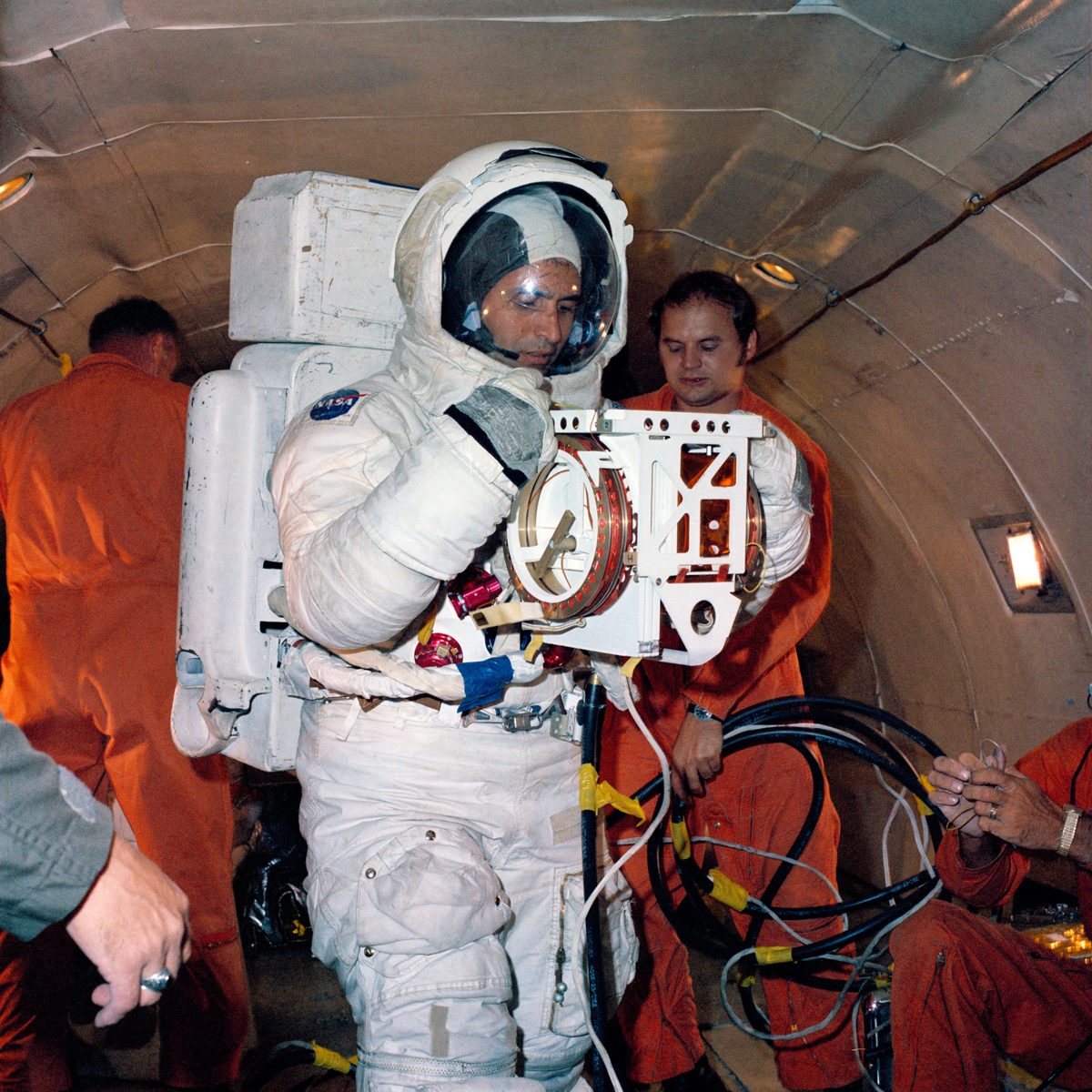
During EVA training on a zero-gravity KC-135 aircraft, scientist-astronaut Harrison H. Schmitt practice deploying the Surface Electrical Properties Experiment.
Suspended in space
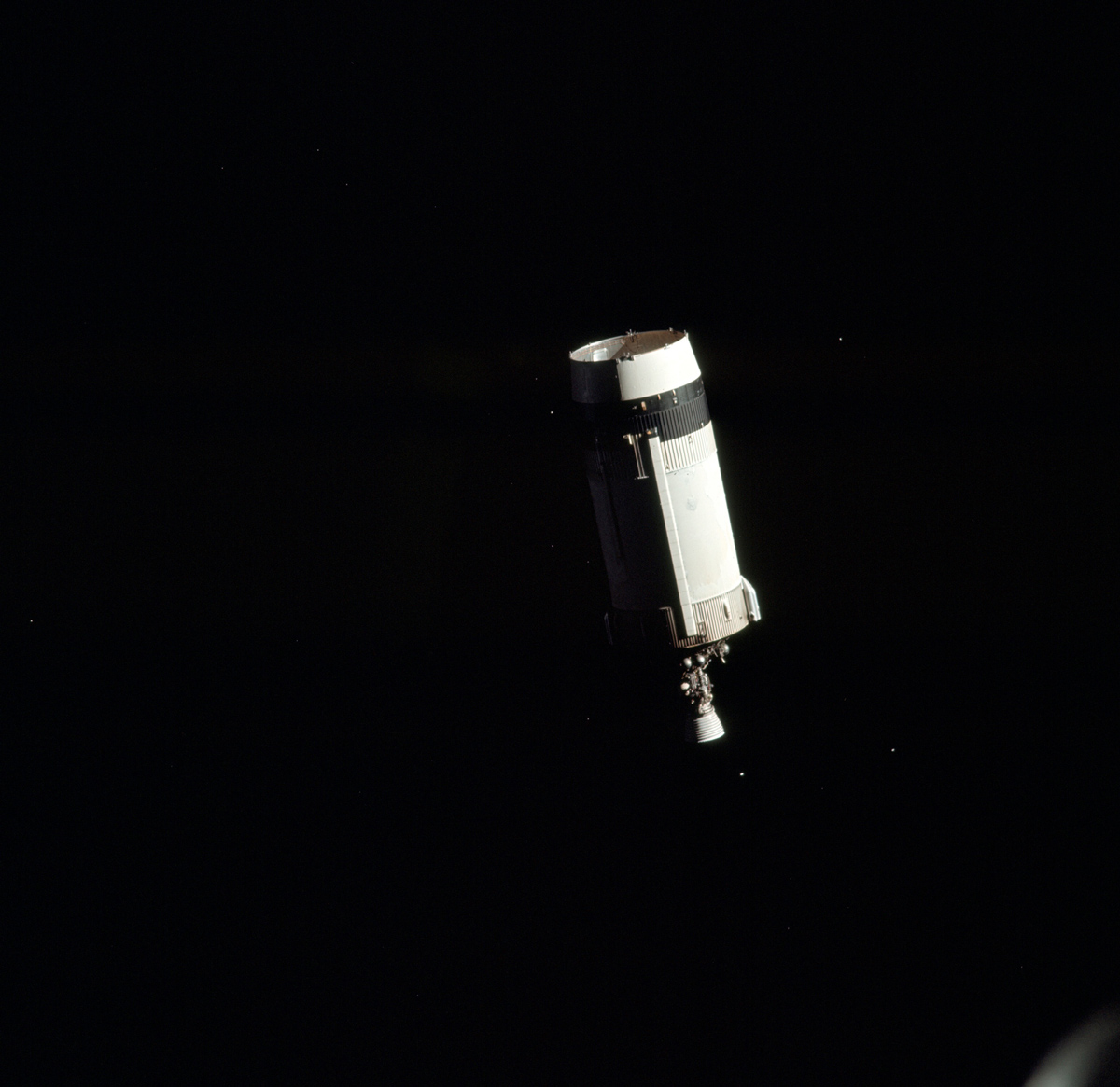
The Saturn IVB stage floats in space before the Apollo 17 transposition and docking maneuvers are completed.
The last splashdown
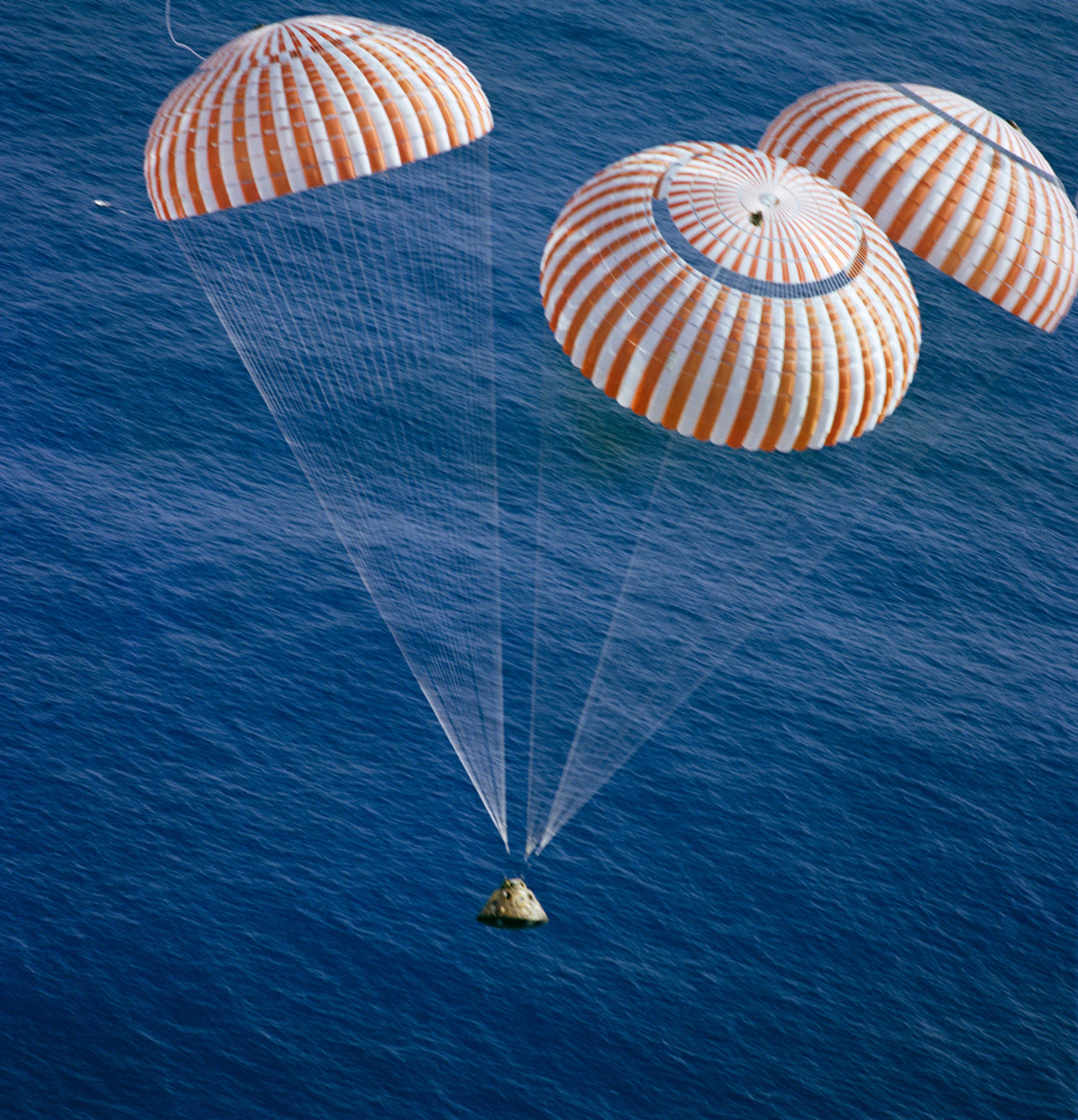
In the South Pacific Ocean, the Apollo 17 Command Module nears splashdown, ending the Apollo 17 lunar landing mission and bringing the Apollo Program to the end.
The end of an era
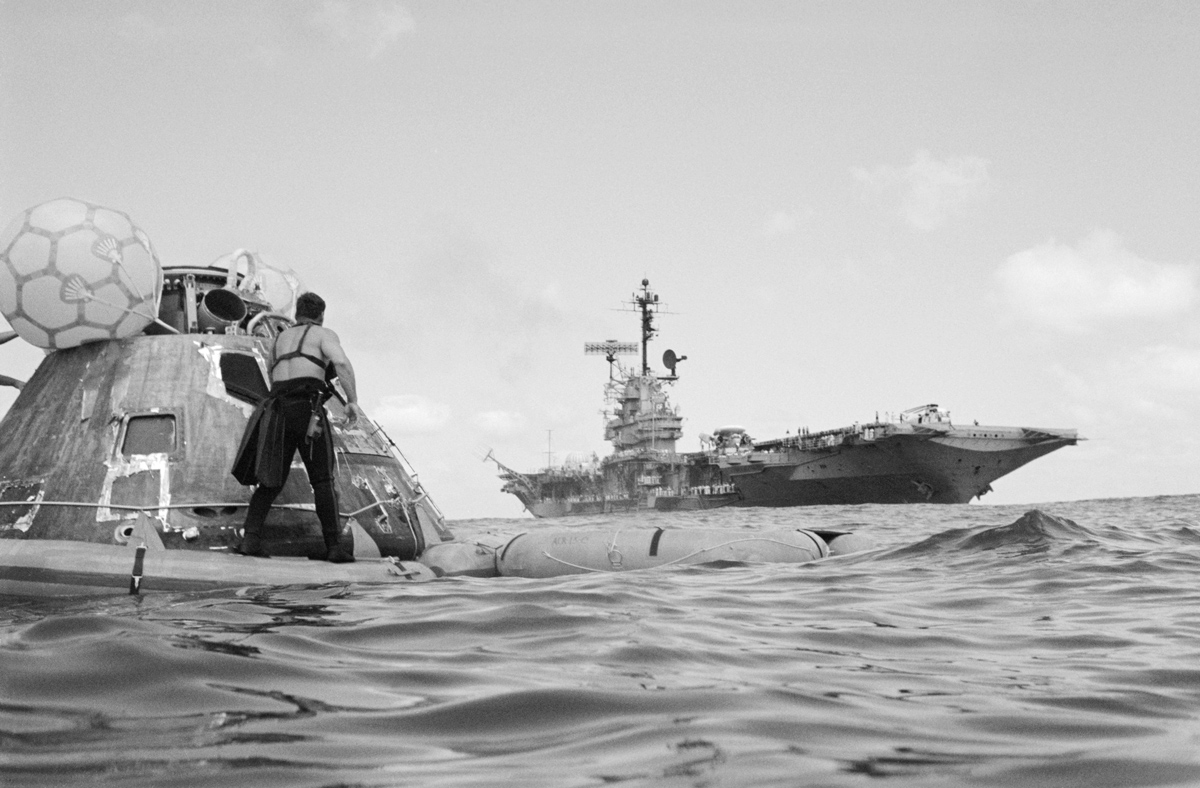
At the ocean surface, aboard the Apollo 17 Command Module, a US Navy diver awaits recovery of the vessel by the USS Ticonderoga. The crewmen have already been transferred by helicopter to the recover vessel.
Recovered trio
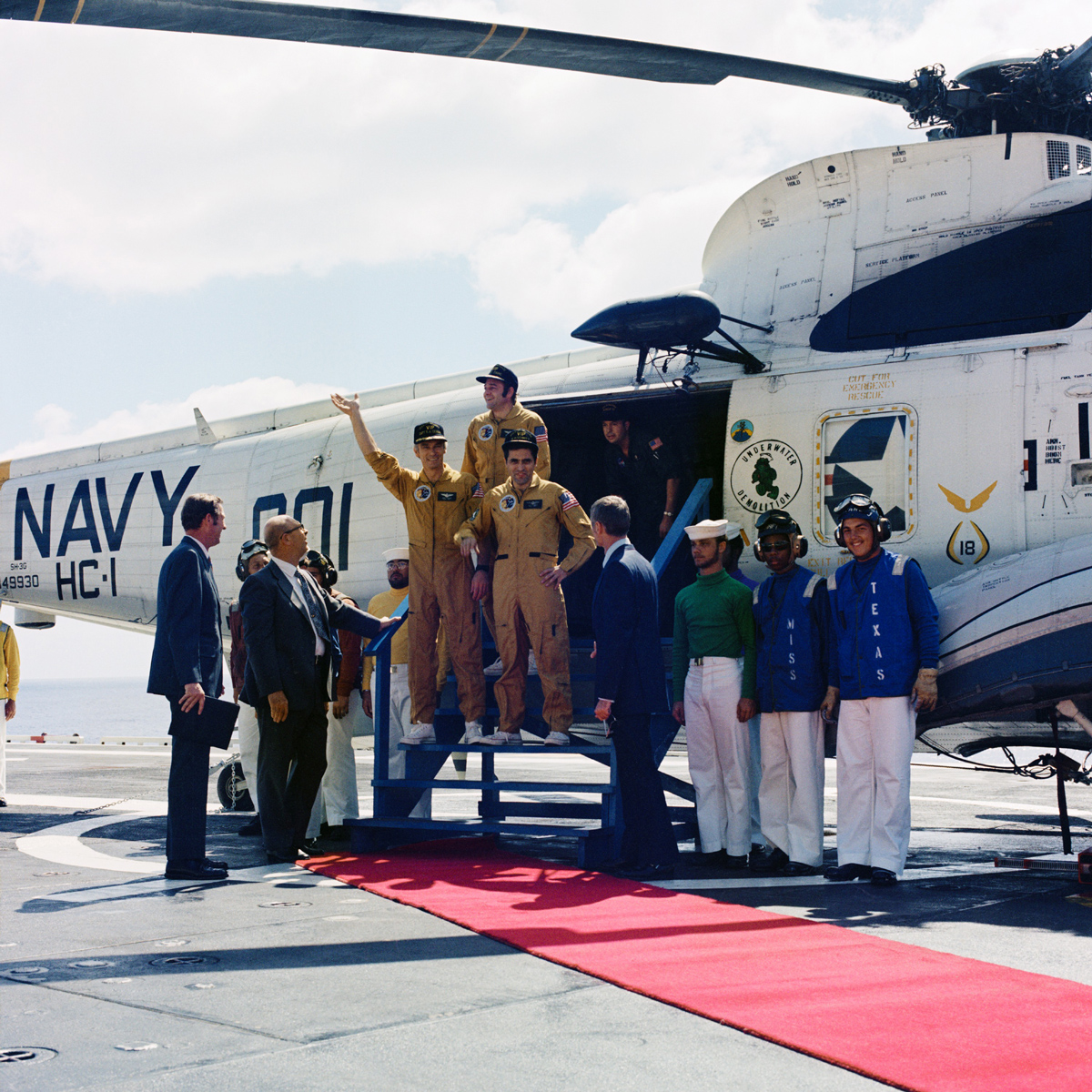
Aboard the USS Ticonderoga, the three Apollo 17 crewmembers arrive after a helicopter ride from the splashdown site.
Back at the lab
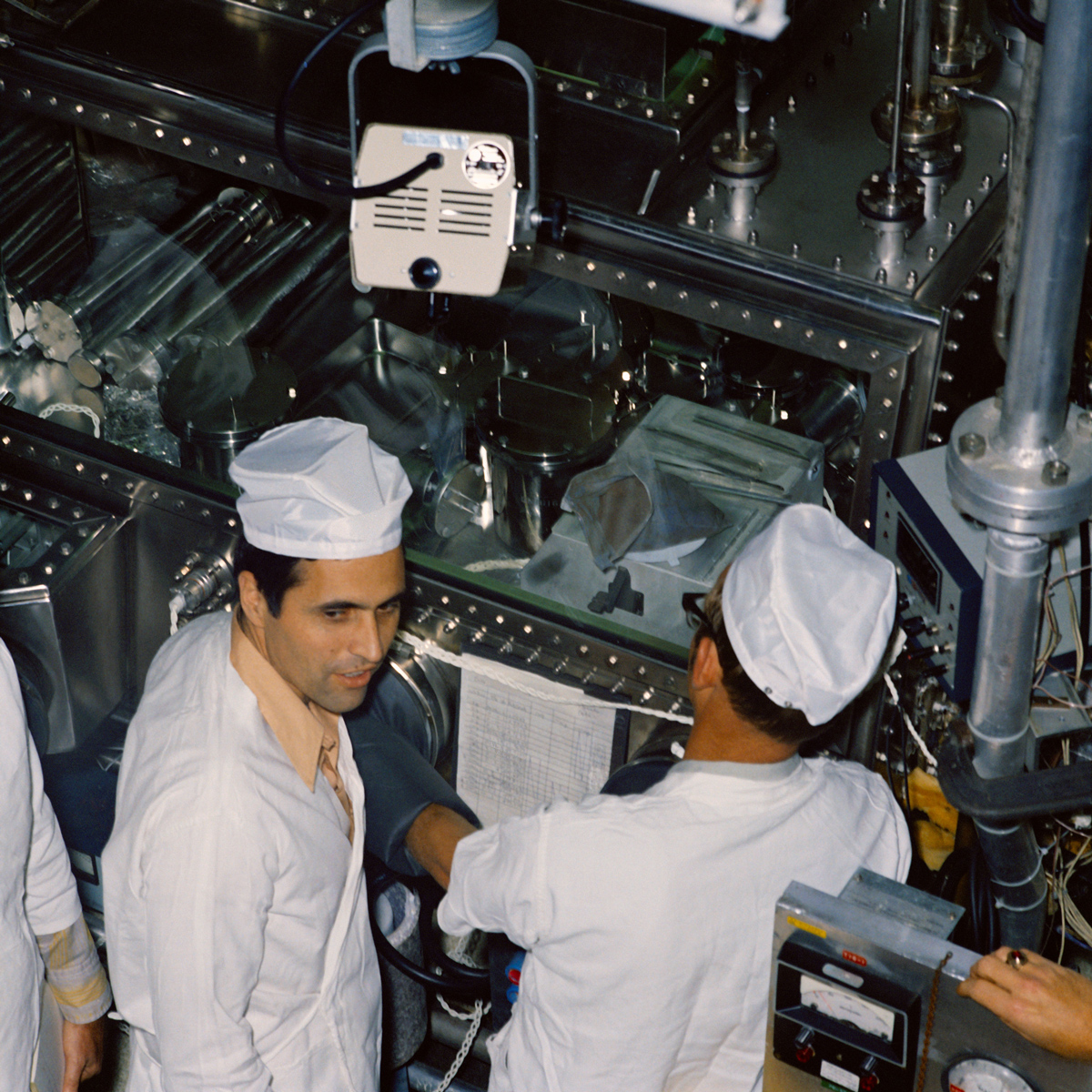
Inside the Lunar Receiving Laboratory at the Manned Spacecraft Center, samples of orange soil and more lunar rocks and dirt from the Apollo 17 lunar landing mission are opened and examined. Scientist-astronaut Harrison H. Schmitt faces the camera, ready to study the samples.
Contamination not welcome
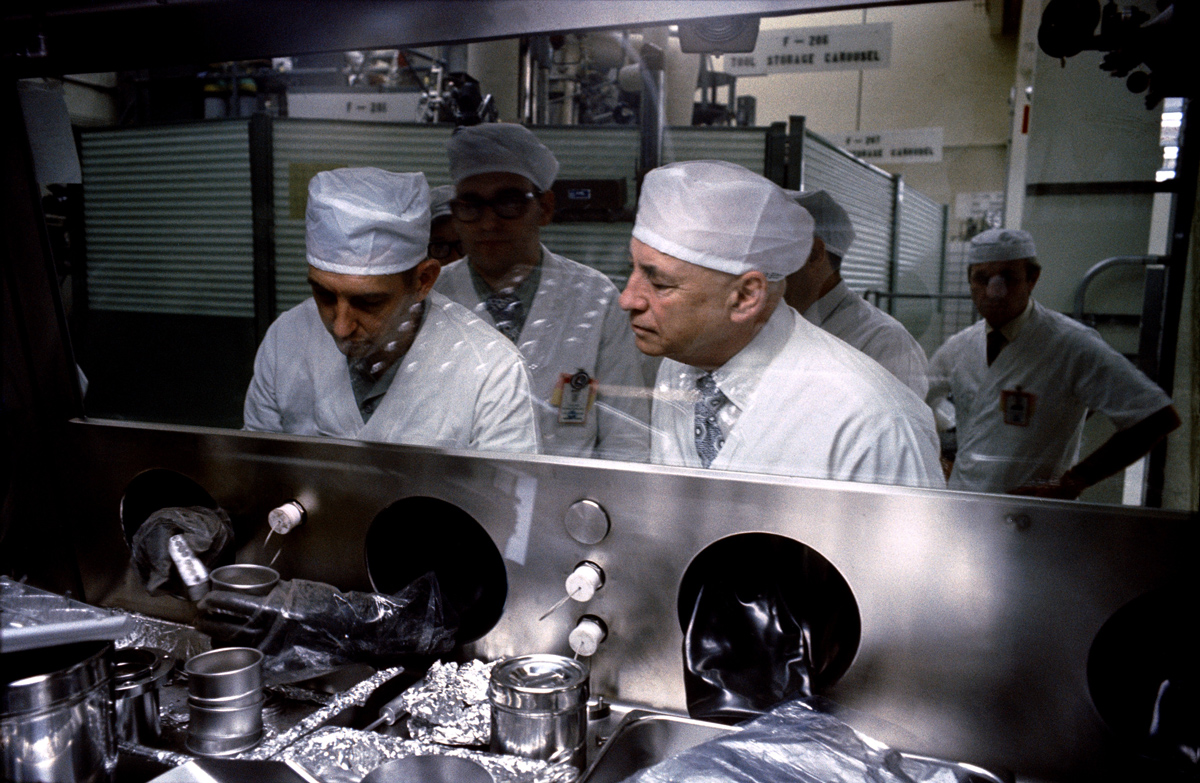
Dr. Robert R. Gilruth, on the right, prepares to inspect some of the Apollo 17 lunar samples wearing special germ-free clothing to protect the samples.
Join our Space Forums to keep talking space on the latest missions, night sky and more! And if you have a news tip, correction or comment, let us know at: community@space.com.
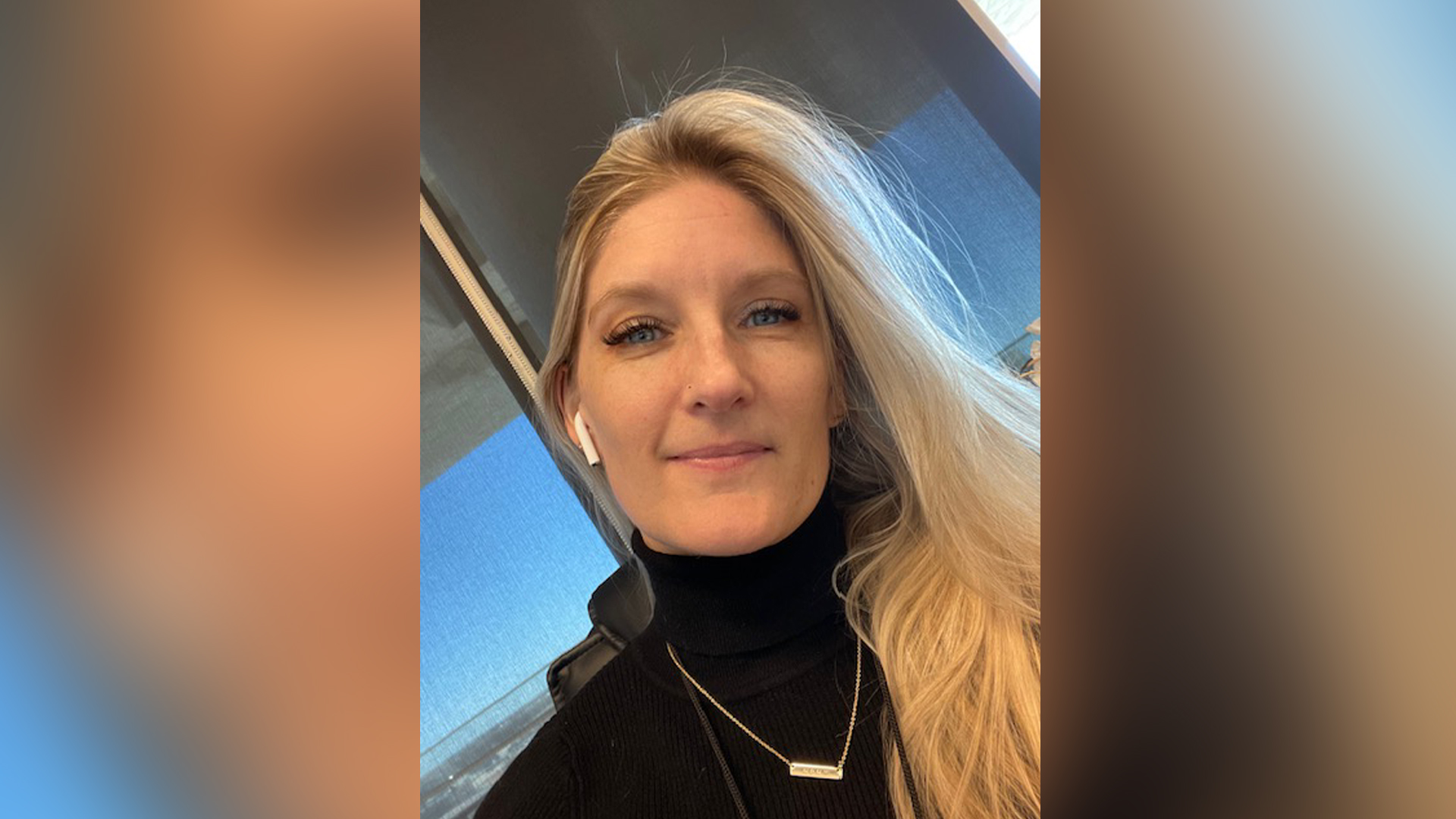
Christine Lunsford joined the Space.com team in 2010 as a freelance producer and later became a contributing writer, covering astrophotography images, astronomy photos and amazing space galleries and more. During her more than 10 years with Space.com, oversaw the site's monthly skywatching updates and produced overnight features and stories on the latest space discoveries. She enjoys learning about subjects of all kinds.
- Daisy DobrijevicReference Editor









